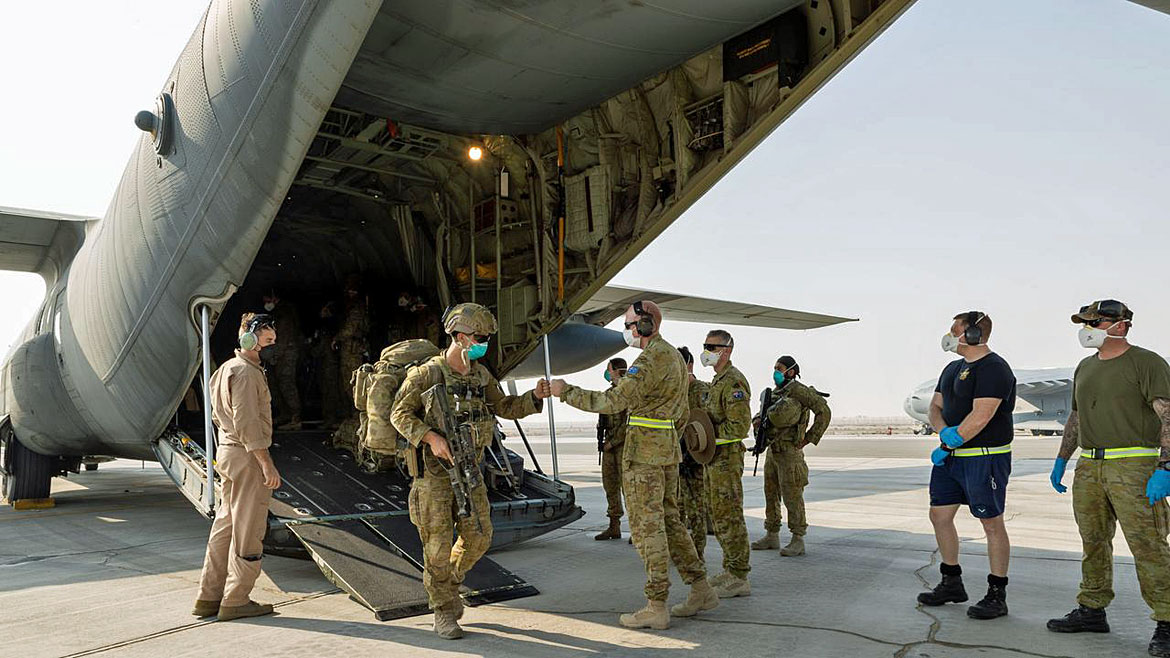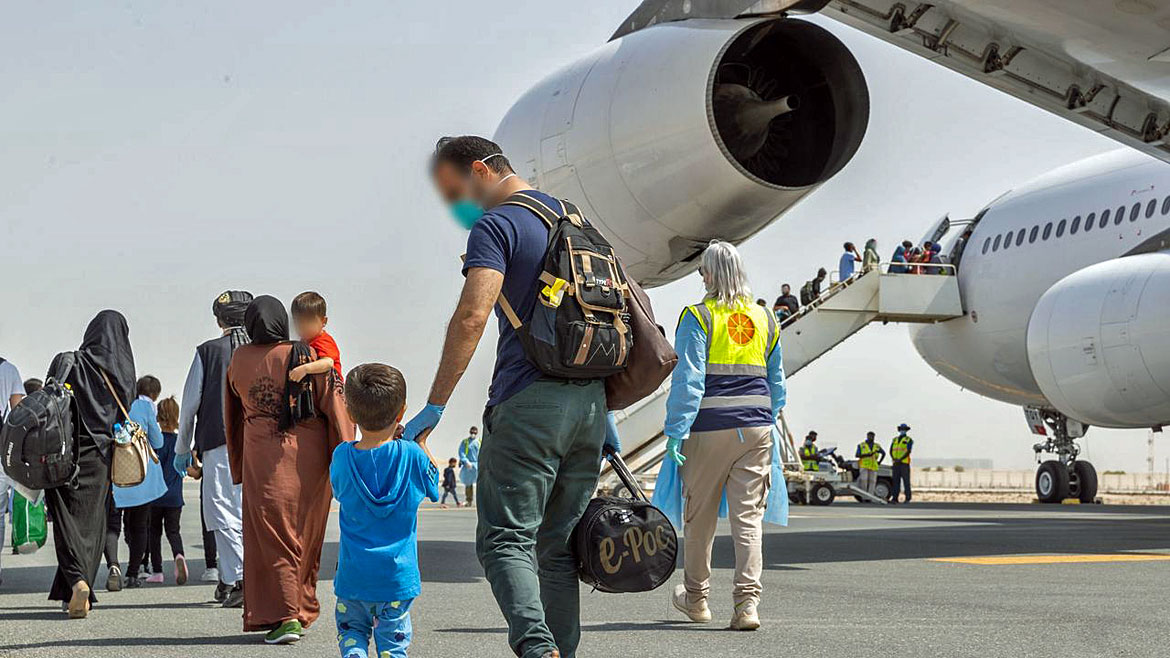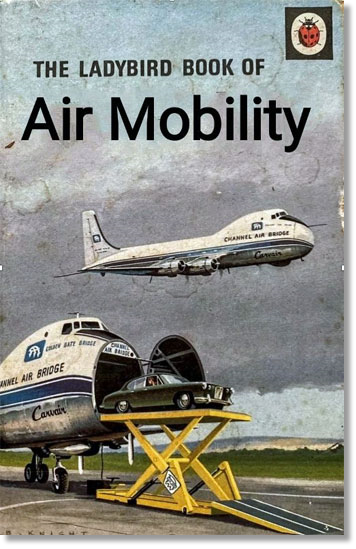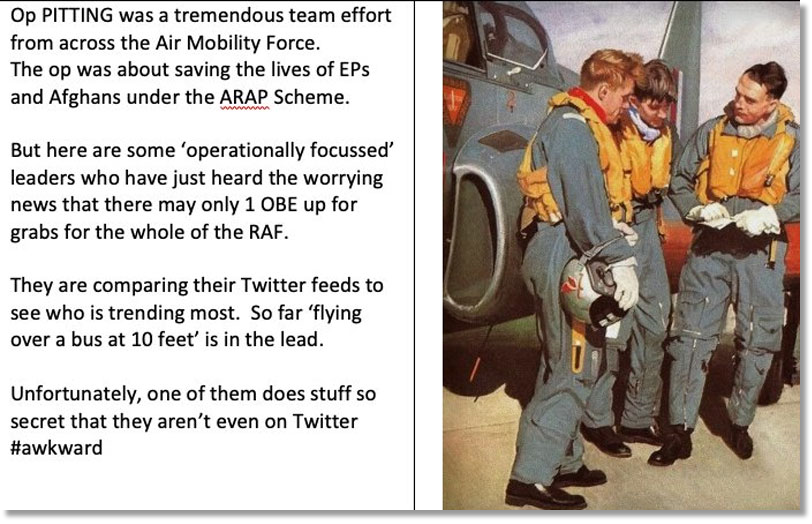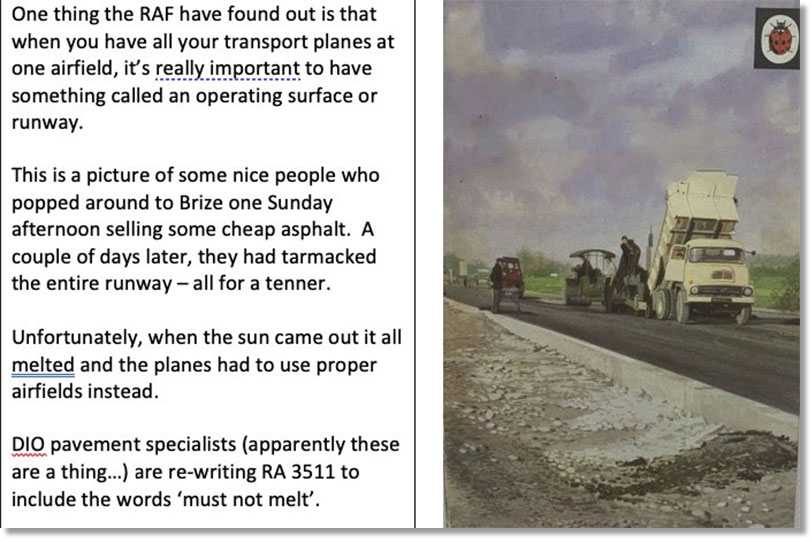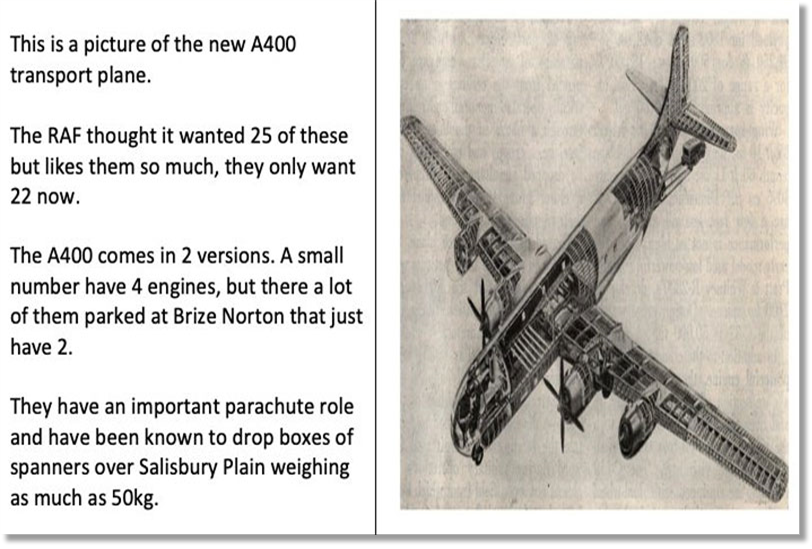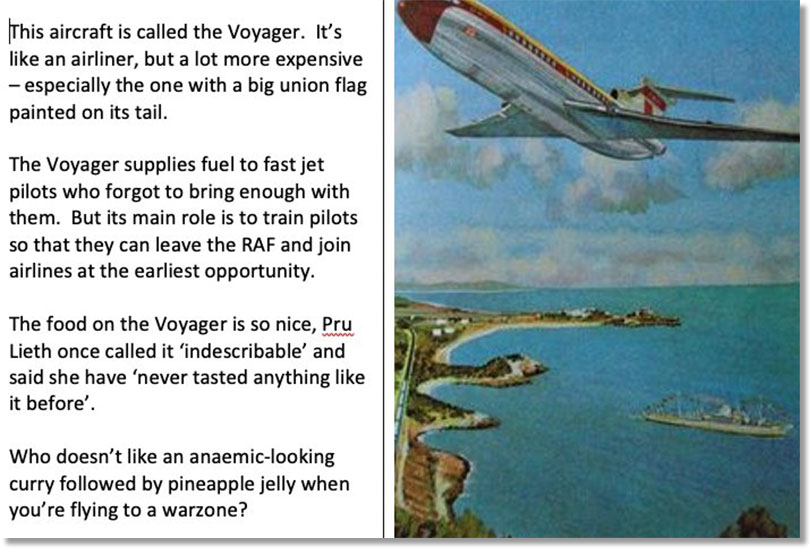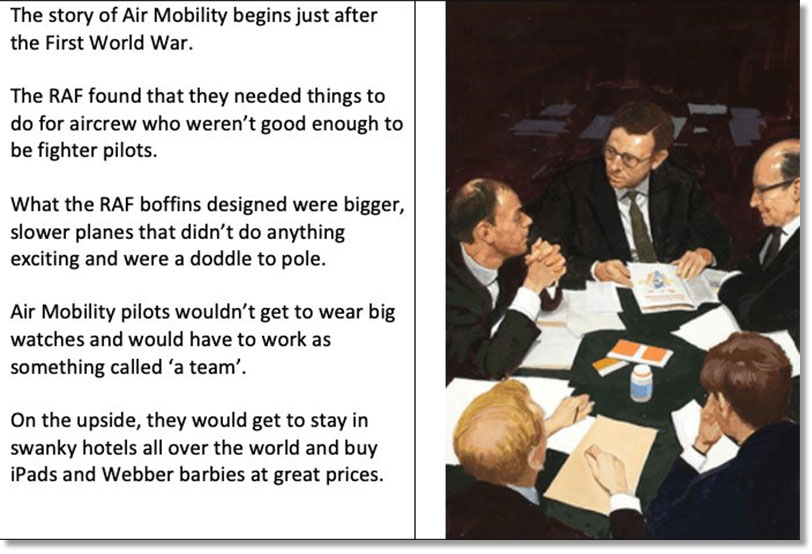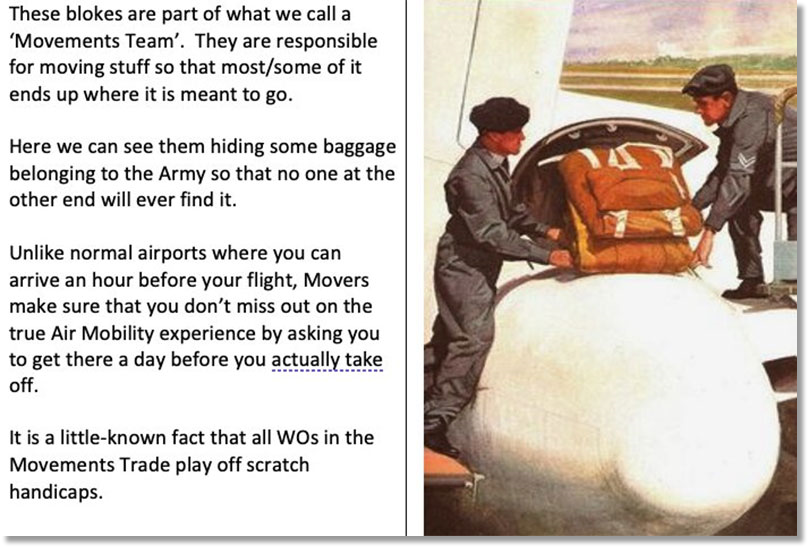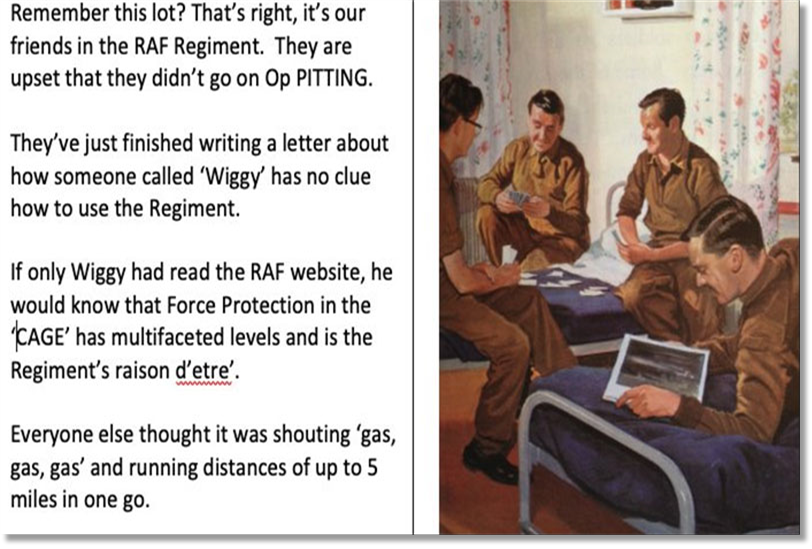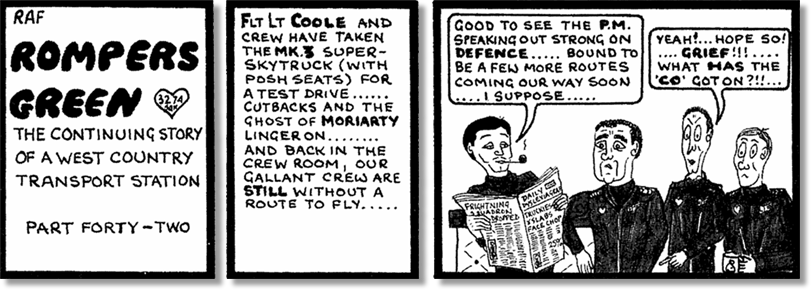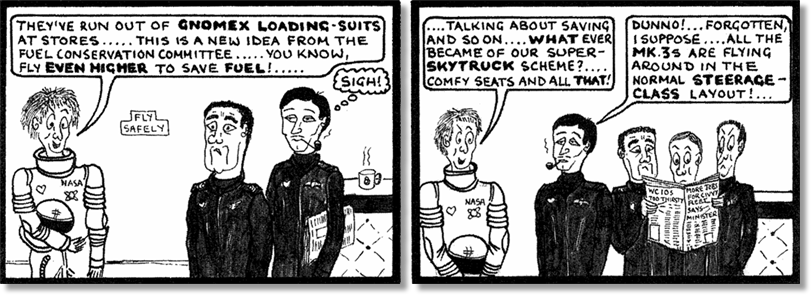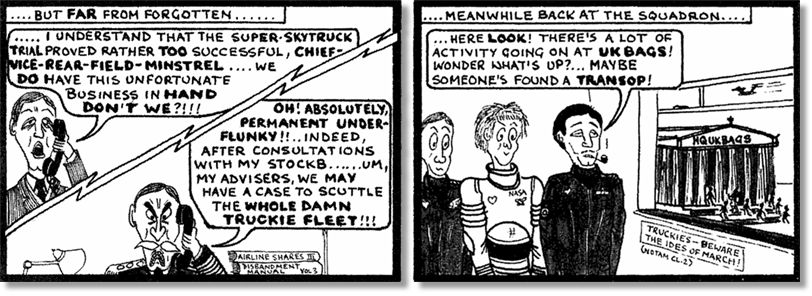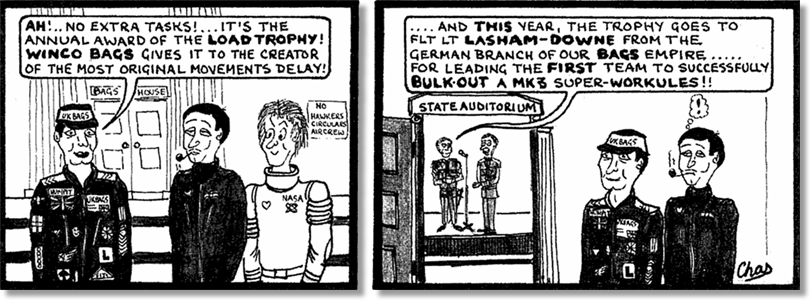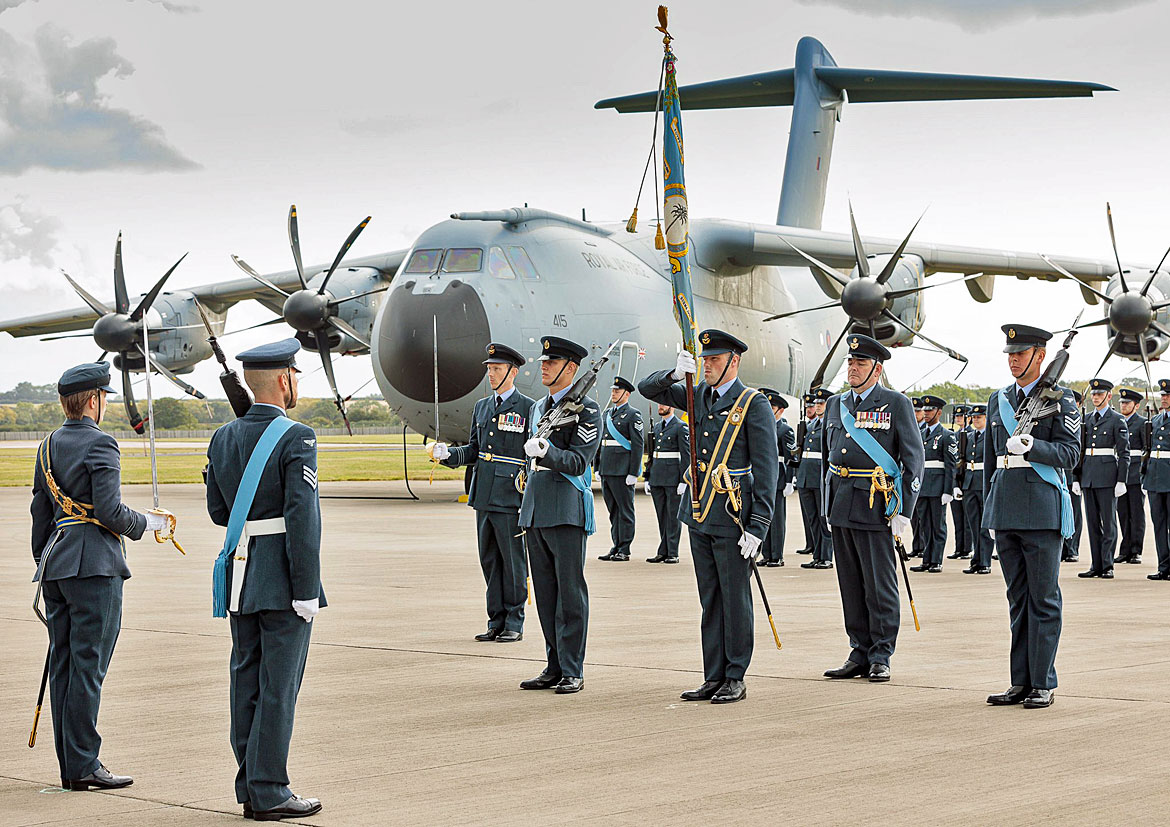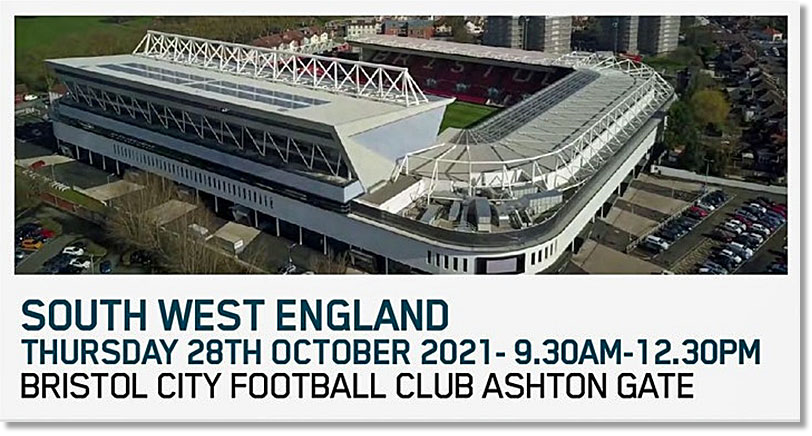


From: Michael Cocker, Swindon, Wilts
Subject: Hotel Stories
Hi Tony,
In 1985 I was lucky enough to be tasked to support the Commonwealth Conference in Nassau, Bahamas. My team mates were Sgt Taff (Alan) Owen and Cpl (Trevor) Oz Oswald, sadly now both departed. We were tasked with deploying and recovering the close protection team for the Prime Minister, Margaret Thatcher, and her husband, Dennis, with a single C130. (As an aside, it was the late, great, Jim Stewart who was the MOpsO at the time, who imparted the good news of this epic adventure.)
Subject: Hotel Stories
Hi Tony,
In 1985 I was lucky enough to be tasked to support the Commonwealth Conference in Nassau, Bahamas. My team mates were Sgt Taff (Alan) Owen and Cpl (Trevor) Oz Oswald, sadly now both departed. We were tasked with deploying and recovering the close protection team for the Prime Minister, Margaret Thatcher, and her husband, Dennis, with a single C130. (As an aside, it was the late, great, Jim Stewart who was the MOpsO at the time, who imparted the good news of this epic adventure.)
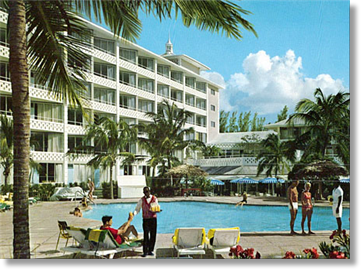

Having arrived in Nassau, we quickly unloaded the 2 x Transit vans and, duly covered in sweat and grease, headed down to the hotel. This turned out to be the "Nassau Beach Hotel", the one used by James Bond in the film "Goldfinger". It also happened to be the same hotel that the Prime Minister and her husband were staying in. We wandered into the hotel just as Mrs Thatcher was leaving and were quickly grabbed by a member of staff and hidden behind reception, but not before we heard her tell Dennis to leave his drink behind!
All this was great fun, but even moreso when we realised that we had no work to do for at least 2 weeks! However, the British High Commision in St Lucia had other ideas!
All this was great fun, but even moreso when we realised that we had no work to do for at least 2 weeks! However, the British High Commision in St Lucia had other ideas!
They were having a garden party and were in need of some extra plastic chairs - enter UKMAMS and 47 Sqn. We flew down to St Lucia with the required chairs, waited a few days in an all inclusive beach hotel (with absolutely no stories to tell), then flew the chairs back to Nassau and the monotony of another week in a 5-star hotel and casino, surrounded by BA and KLM stewardesses... hell for another few days...
Our departure eventually happened, with an eventful flypast along the beach (a little flight control issue!), past the hotel, heading for Boston. Once in the cruise I made some coffee for Taff and Oz, and our delightful SF passengers (about 8 of them) assumed I was their "Trolly Dolly" for the flight, so they came to me everytime they wanted a drink or food - bloody annoying, but I wasn't about to tell them to sod off!
We had one night in Boston, in an unremarkable hotel, however, while trying to enter a night club a couple of blocks away, the doorman suggested we may not want to come in - we were insistent, and he let us in. While we sat at the bar having a manly drink, I think we all noticed at the same time, several men dancing together very closely, with more than a peck on the cheek going on... We drank up and left, thanking the doorman for his advice.
The rest of the trip was uneventful, but I do wish I'd had a camera with me. Taff Owen and Oz Oswald were two of the finest team mates you could wish for, and I cherish the memories. I do have another tale of a task with Oz, but that will wait for another day. I must be careful not to spoil the book.
All the best
Mick
Our departure eventually happened, with an eventful flypast along the beach (a little flight control issue!), past the hotel, heading for Boston. Once in the cruise I made some coffee for Taff and Oz, and our delightful SF passengers (about 8 of them) assumed I was their "Trolly Dolly" for the flight, so they came to me everytime they wanted a drink or food - bloody annoying, but I wasn't about to tell them to sod off!
We had one night in Boston, in an unremarkable hotel, however, while trying to enter a night club a couple of blocks away, the doorman suggested we may not want to come in - we were insistent, and he let us in. While we sat at the bar having a manly drink, I think we all noticed at the same time, several men dancing together very closely, with more than a peck on the cheek going on... We drank up and left, thanking the doorman for his advice.
The rest of the trip was uneventful, but I do wish I'd had a camera with me. Taff Owen and Oz Oswald were two of the finest team mates you could wish for, and I cherish the memories. I do have another tale of a task with Oz, but that will wait for another day. I must be careful not to spoil the book.
All the best
Mick

From: David Bernard, Bicester, Oxon
Subject: A trilogy of Hotel Experiences
Hello Tony,
I missed the deadline for “hotel experiences” but offer this trilogy of hotel stories:
Subject: A trilogy of Hotel Experiences
Hello Tony,
I missed the deadline for “hotel experiences” but offer this trilogy of hotel stories:
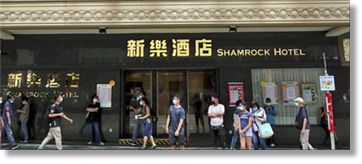
Back in the mid-60s, in the days of Hastings operations and Transport Command, crews visiting RAF Kai Tak were accommodated in a hotel on Nathan Road, Hong Kong called the Shamrock. I remember the skipper, one Flt Lt Johnny Johnson ringing the bell at reception and being confronted by a wizened old dear, all of 4ft 5 inches tall, with the complexion of a dried prune. The skipper announced that we were an RAF crew requiring 6 rooms.
She looked up and in very clear English announced, “I know you all RAF crew, you all have big cock, pee in sink and pay by cheque”! It took several ice cold San Miguel’s to recover from her perceptive comment
In 1972, I was attached to 216 Squadron and had arrived in Chiang Mai as part of a ‘proving flight’ in advance of a royal visit to the far east. I had booked the crew into what looked like a reasonable hotel and we dispersed to our rooms. On arrival in my room I was greeted by a young Thai lass who told me that she was my servant for the stay and would provide anything I wanted! I thanked her and ushered her towards the door. She became very distressed and eventually backed into a large alcove with a bed behind a curtain. Clearly, this girl was part of the room service.
Almost immediately the phone rang and the boss, Basil D'Oliveira, told me to get the whole crew together in the hotel manager’s office to discuss the ‘predicament’ as he called it. Apparently, the young ladies were included with every room and to dismiss them would cause shame on their families and financial hardship. The solution was to hire extra rooms where all these young lasses would reside until we checked out in a couple of days. Room service had taken on an entirely new meaning!
In 1972, I was attached to 216 Squadron and had arrived in Chiang Mai as part of a ‘proving flight’ in advance of a royal visit to the far east. I had booked the crew into what looked like a reasonable hotel and we dispersed to our rooms. On arrival in my room I was greeted by a young Thai lass who told me that she was my servant for the stay and would provide anything I wanted! I thanked her and ushered her towards the door. She became very distressed and eventually backed into a large alcove with a bed behind a curtain. Clearly, this girl was part of the room service.
Almost immediately the phone rang and the boss, Basil D'Oliveira, told me to get the whole crew together in the hotel manager’s office to discuss the ‘predicament’ as he called it. Apparently, the young ladies were included with every room and to dismiss them would cause shame on their families and financial hardship. The solution was to hire extra rooms where all these young lasses would reside until we checked out in a couple of days. Room service had taken on an entirely new meaning!
Sometime in the mid-1970s I was asked to join 241 OCU as imprest/admin officer for their annual “States Trainer”. The itinerary included Nellis Air Force Base, Nevada – a short drive from Las Vegas.
For some reason no accommodation had been pre-booked, so after a long walk to base ops I called a number of hotels requesting 12 rooms. The only hotel with rooms available was the Hilton. At reception I asked for rooms to be allocated as close as possible.
For some reason no accommodation had been pre-booked, so after a long walk to base ops I called a number of hotels requesting 12 rooms. The only hotel with rooms available was the Hilton. At reception I asked for rooms to be allocated as close as possible.
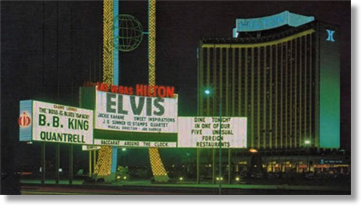
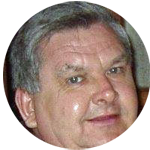
Meanwhile, one of the crew, Taff Williams, in jest and in a loud Welsh accent, kept repeating that he wanted “a four poster bed with a mirror-tiled ceiling”. All the rooms were allocated on the 15th floor with Taff being the exception, allocated a room on the 12th floor. When I arrived in my room the phone was ringing; it was Taff. “Get down to my room – there is a problem” he insisted. When I arrived in his room, a bridal suite, there was a massive four-poster bed and a mirror-tiled ceiling with Taff pleading for a room change! Be careful what you wish for.
Best Wishes,
Dave
Best Wishes,
Dave

RAF pilot reveals near miss on the runway at Kabul airport
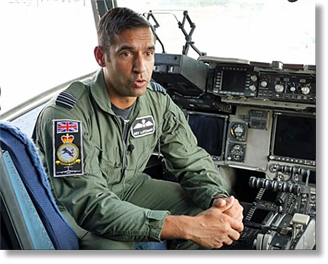
An RAF pilot missed smashing his aircraft into a bus carrying evacuees at Kabul airport by about 3m (10ft) after the vehicle steered onto the runway as he was taking off.
Wing Commander Kev Latchman revealed military air traffic controllers had been praying for him when they saw his C-17 transport aircraft hurtling towards a line of three vehicles that had taken a wrong turn while trying to reach another evacuation flight. "At this point, we were doing about 95 knots and they were about a thousand feet ahead of us," he said, speaking from RAF Brize Norton airbase in Oxfordshire. We realised that we wouldn't have been able to reject [abort] the take-off, because if I tried to reject then I would have basically... taken out the bus and that doesn't really bear thinking about."
Wing Commander Kev Latchman revealed military air traffic controllers had been praying for him when they saw his C-17 transport aircraft hurtling towards a line of three vehicles that had taken a wrong turn while trying to reach another evacuation flight. "At this point, we were doing about 95 knots and they were about a thousand feet ahead of us," he said, speaking from RAF Brize Norton airbase in Oxfordshire. We realised that we wouldn't have been able to reject [abort] the take-off, because if I tried to reject then I would have basically... taken out the bus and that doesn't really bear thinking about."
He decided he had to continue with the take-off but then realised that there was not enough distance between his aircraft and the bus to be able to reach the required speed to get airborne - what is known as rotate speed. "So I said, I think we're going to need to rotate early. And the other pilot agreed. We started to rotate the aircraft about 20 knots earlier than rotate speed. "We got airborne and we just missed the bus by probably about 10, 15ft." He said a member of his crew had also put the distance at about 10ft. Making things even more of a challenge, the airman was having to fly without any runway lights because the power at the airport had failed.
The incident happened on 26 August at a time of acute tensions following a suicide bomb attack hours earlier that had ripped through crowds of people who had been waiting for evacuation flights.
Wing Commander Latchman, who commands 99 Squadron, said he had apparently been "quite calm" while dealing with the potential bus disaster "because you've got no choice". The close call hit home following a conversation with air traffic controllers. "We didn't think you were going to make it. We were praying for you," he recalled them saying.
The near miss is just one of a number of stories to emerge from Operation Pitting, the UK's two-week evacuation mission from Kabul airport after the Western-backed Afghan government collapsed in a Taliban takeover last month. The RAF flew more than 15,000 Afghans, British nationals and others to safety in the biggest evacuation effort since the Second World War.
Aircrew described what it was like to look after plane-loads of desperate Afghans, many who had never flown before and were traumatised after spending days in the heat and crowds outside the airport, waiting to be called forward for a flight. "The conditions were stark, you know, when you look down the back, you've got anxious faces," said Wing Commander Latchman. "You had some people who didn't think they were going to leave Afghanistan. So when they got on board the airplane... the relief led to, you know, some spontaneous reactions. We had one lady who was spontaneously vomiting continuously all over the airplane because she'd lost her husband the day before and she didn't know what was going to happen."
There was also the hazard to the aircrew of operating out of an airport in a country now under Taliban control. One pilot described how he had to abort an attempt to land in Kabul on 16 August - the day after the city fell to the Taliban - because crowds of people had surged onto the airfield and swarmed over aircraft on the ground, including a US military plane. "We could see the airfield was completely overrun," said Flight Lieutenant Neil Franklin, of 70 Squadron, who flies the A400M Atlas transport aircraft.
"There were people on the taxiways, people on the southern apron, and the civilian airliners were covered in people... it was just utter chaos.
As well as the danger posed by crowds, there was the danger posed by terrorist attacks and - on the day Kabul fell - being caught up in the closing stages of the Taliban surge to power.
Squadron Leader Mark Parker, of 70 Squadron, had just dropped off some British troops at Kabul airport on 15 August when the airfield itself was targeted by gunfire and mortars. He said it was hard to know what was going on. "The US Marines in the tower called incoming, base under attack," the officer said. "We had some rounds impacting the ground around our aircraft… And I recall an American helicopter pilot calling mortars inbound and he flew off to have a look at the mortar tube."
The pilot said he was not able to get his A400 plane off the ground straight away as there was too much traffic so they had to wait for about 30 seconds to a minute. "We took off with some kind of firefight going on at the south side of the airport," he said, adding that his aircraft thankfully was not hit.
World News | Sky News
Wing Commander Latchman, who commands 99 Squadron, said he had apparently been "quite calm" while dealing with the potential bus disaster "because you've got no choice". The close call hit home following a conversation with air traffic controllers. "We didn't think you were going to make it. We were praying for you," he recalled them saying.
The near miss is just one of a number of stories to emerge from Operation Pitting, the UK's two-week evacuation mission from Kabul airport after the Western-backed Afghan government collapsed in a Taliban takeover last month. The RAF flew more than 15,000 Afghans, British nationals and others to safety in the biggest evacuation effort since the Second World War.
Aircrew described what it was like to look after plane-loads of desperate Afghans, many who had never flown before and were traumatised after spending days in the heat and crowds outside the airport, waiting to be called forward for a flight. "The conditions were stark, you know, when you look down the back, you've got anxious faces," said Wing Commander Latchman. "You had some people who didn't think they were going to leave Afghanistan. So when they got on board the airplane... the relief led to, you know, some spontaneous reactions. We had one lady who was spontaneously vomiting continuously all over the airplane because she'd lost her husband the day before and she didn't know what was going to happen."
There was also the hazard to the aircrew of operating out of an airport in a country now under Taliban control. One pilot described how he had to abort an attempt to land in Kabul on 16 August - the day after the city fell to the Taliban - because crowds of people had surged onto the airfield and swarmed over aircraft on the ground, including a US military plane. "We could see the airfield was completely overrun," said Flight Lieutenant Neil Franklin, of 70 Squadron, who flies the A400M Atlas transport aircraft.
"There were people on the taxiways, people on the southern apron, and the civilian airliners were covered in people... it was just utter chaos.
As well as the danger posed by crowds, there was the danger posed by terrorist attacks and - on the day Kabul fell - being caught up in the closing stages of the Taliban surge to power.
Squadron Leader Mark Parker, of 70 Squadron, had just dropped off some British troops at Kabul airport on 15 August when the airfield itself was targeted by gunfire and mortars. He said it was hard to know what was going on. "The US Marines in the tower called incoming, base under attack," the officer said. "We had some rounds impacting the ground around our aircraft… And I recall an American helicopter pilot calling mortars inbound and he flew off to have a look at the mortar tube."
The pilot said he was not able to get his A400 plane off the ground straight away as there was too much traffic so they had to wait for about 30 seconds to a minute. "We took off with some kind of firefight going on at the south side of the airport," he said, adding that his aircraft thankfully was not hit.
World News | Sky News

Story behind fist-bump between Afghan boy and airman
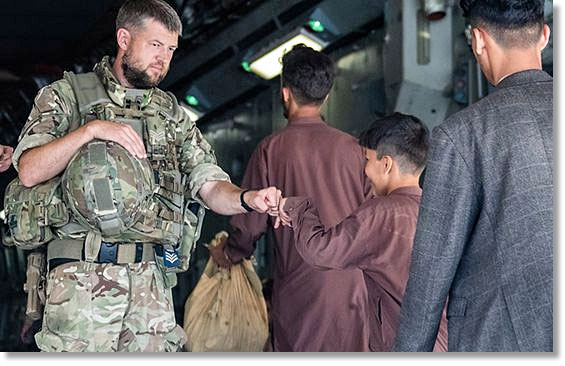
A Norfolk airman has said that his duty as a father helped him in the largest air evacuation carried out by the RAF in over 70 years.
Belton father-of-two, Sgt Chris Hall has shared his thoughts on the moment he was photographed fist-bumping an Afghan boy boarding a Royal Air Force (RAF) plane during the evacuation of Kabul in late August.
The picture was featured on the front pages of several British national newspapers and has been regarded as one of the defining images of the Afghan evacuation.
Sgt Hall, 39, who is based in Brize Norton, Oxfordshire, with the UK Mobile Air Movements Squadron (UKMAMS), said: "There were families getting on the aircraft and some of the children hadn't seen a plane before. "Many kids were crying at the bottom of the ramp. One boy was crying and refusing to get aboard. So I crouched down and said 'come on, mate' and gave him a fist-bump. Then about eight kids behind the boy came up and they all wanted a fist-bump as well."
Belton father-of-two, Sgt Chris Hall has shared his thoughts on the moment he was photographed fist-bumping an Afghan boy boarding a Royal Air Force (RAF) plane during the evacuation of Kabul in late August.
The picture was featured on the front pages of several British national newspapers and has been regarded as one of the defining images of the Afghan evacuation.
Sgt Hall, 39, who is based in Brize Norton, Oxfordshire, with the UK Mobile Air Movements Squadron (UKMAMS), said: "There were families getting on the aircraft and some of the children hadn't seen a plane before. "Many kids were crying at the bottom of the ramp. One boy was crying and refusing to get aboard. So I crouched down and said 'come on, mate' and gave him a fist-bump. Then about eight kids behind the boy came up and they all wanted a fist-bump as well."
Great Yarmouth Mercury

From: Doug Stewart, Stouffville, ON
Subject: Afghanistan
Hello Tony,
Well done all RAF personnel. You were there when called. At the age of 94, I still look back with much pride at my service during 1945/1948 [Aden and Salalah]. God Bless each and every one of you!
Doug Stewart
Subject: Afghanistan
Hello Tony,
Well done all RAF personnel. You were there when called. At the age of 94, I still look back with much pride at my service during 1945/1948 [Aden and Salalah]. God Bless each and every one of you!
Doug Stewart
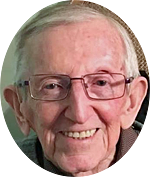
I left the Royal Air Force in August 2011 after nine years’ service, including two tours of Afghanistan and one in Iraq.
I left the RAF to take up a role as a civilian contractor based in the Afghan capital, Kabul. Following a merry-go-round of decisions on my future in the forces, with MOD cuts doing the rounds. My old boss in the RAF, being my new boss in Kabul, had a significant impact on my decision and in what seemed like an instant, I had departed the gates of RAF Northolt and was on final approach to Kabul International Airport, via a few days of paperwork and training in Dubai.
The company I worked for had a presence in each of the airfields within Afghanistan from Kabul to Kandahar, to Camp Bastion, Mazar-e-Sharif, Jalalabad, Herat, you name it and we were there. Kabul though, was the only base the company had in which staff were accommodated “off-site” as in away from airport operations and the safe haven of NATO troops. We were to reside in a secure compound known as Green Village around a mile and a half away from Kabul Airport.
It was only on the day of the flight from Dubai, alongside a fellow new starter, did I appreciate the fact I’d be landing on a civilian airliner (Fly Dubai) on the civilian side of the airport. I had been under the impression I’d be landing and handled on the military side of the airfield and thus a little safer!
As the mountains of Kabul loomed towards the descending aircraft, Mihai, my new colleague, gave me a glance and raised his eyebrows, as if to say, “Here we go then!”
I left the RAF to take up a role as a civilian contractor based in the Afghan capital, Kabul. Following a merry-go-round of decisions on my future in the forces, with MOD cuts doing the rounds. My old boss in the RAF, being my new boss in Kabul, had a significant impact on my decision and in what seemed like an instant, I had departed the gates of RAF Northolt and was on final approach to Kabul International Airport, via a few days of paperwork and training in Dubai.
The company I worked for had a presence in each of the airfields within Afghanistan from Kabul to Kandahar, to Camp Bastion, Mazar-e-Sharif, Jalalabad, Herat, you name it and we were there. Kabul though, was the only base the company had in which staff were accommodated “off-site” as in away from airport operations and the safe haven of NATO troops. We were to reside in a secure compound known as Green Village around a mile and a half away from Kabul Airport.
It was only on the day of the flight from Dubai, alongside a fellow new starter, did I appreciate the fact I’d be landing on a civilian airliner (Fly Dubai) on the civilian side of the airport. I had been under the impression I’d be landing and handled on the military side of the airfield and thus a little safer!
As the mountains of Kabul loomed towards the descending aircraft, Mihai, my new colleague, gave me a glance and raised his eyebrows, as if to say, “Here we go then!”
From: Mal Robinson, Gateshead, Tyne & Wear
Subject: Memories of Afghanistan
Mal Robinson reflects on his time as a civilian contractor in Kabul and how the recent horrific scenes in the Afghan capital, following the resurgence of the Taliban in country, brought back memories of an 8-month stay 10 years ago.
Subject: Memories of Afghanistan
Mal Robinson reflects on his time as a civilian contractor in Kabul and how the recent horrific scenes in the Afghan capital, following the resurgence of the Taliban in country, brought back memories of an 8-month stay 10 years ago.
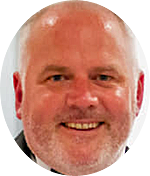
Kabul Crisis Evokes Memories for Mal
The airport had not been touched since the 1950’s, or so it seemed. Only one of the baggage belts was working and a long queue ensued for foreign nationals entering the country. There was a lot of noise and a lot of commotion and it all seemed to be a state of organized chaos. After an hour or so, we finally made it through customs, imports and whatever documentation check was available. All the while, it was playing on my mind what scene would meet me outside the terminal.
We were told in no circumstances were we to use the flurry of yellow cabs waiting outside. I was told to wait for our HR manager to meet us outside the terminal but after ten minutes or so there was no sign. What we thought was a local Afghan woman with a black veil over her head approached us. It was Ingrid, our HR manager who thought she’d have a little fun with us on our first sojourn into Kabul.
The whole airport looked to be a scene of chaos, but if the arrival was edgy at times, the first and subsequent departures were ten times more nerve wracking.
To leave the country via the airport there seemed to be a labyrinth of security checks and scanners, designed to identify any would-be terrorist at the earliest opportunity and negate a suicide attack inside or near the terminal. There had been many security instances already which had killed locals in and around the facility.
The route into Kabul airport and its surrounds was not a place then to hang around and the name of the game was to get into the airside of departures as soon as possible. This was easier said than done. Following the endless stop and searches, on entering departures a melee greeted you once inside. There were several flights leaving that day and although check-in desks were open, there seemed to be no particular queue for any individual flight.
I was asked several times to pay locals in order to help facilitate my journey through the madness to check-in a little easier and by the time the tenth person asked me for dollars to check me in, I accepted.
It was then a case of waiting to get through customs and on some occasions, it would take several hours, one time even seeing a group of us storm to the front and ask to be let through as our flight (for which we were many hours early for) was about to depart!
We were told in no circumstances were we to use the flurry of yellow cabs waiting outside. I was told to wait for our HR manager to meet us outside the terminal but after ten minutes or so there was no sign. What we thought was a local Afghan woman with a black veil over her head approached us. It was Ingrid, our HR manager who thought she’d have a little fun with us on our first sojourn into Kabul.
The whole airport looked to be a scene of chaos, but if the arrival was edgy at times, the first and subsequent departures were ten times more nerve wracking.
To leave the country via the airport there seemed to be a labyrinth of security checks and scanners, designed to identify any would-be terrorist at the earliest opportunity and negate a suicide attack inside or near the terminal. There had been many security instances already which had killed locals in and around the facility.
The route into Kabul airport and its surrounds was not a place then to hang around and the name of the game was to get into the airside of departures as soon as possible. This was easier said than done. Following the endless stop and searches, on entering departures a melee greeted you once inside. There were several flights leaving that day and although check-in desks were open, there seemed to be no particular queue for any individual flight.
I was asked several times to pay locals in order to help facilitate my journey through the madness to check-in a little easier and by the time the tenth person asked me for dollars to check me in, I accepted.
It was then a case of waiting to get through customs and on some occasions, it would take several hours, one time even seeing a group of us storm to the front and ask to be let through as our flight (for which we were many hours early for) was about to depart!
Fast forward to August 2021 and I can’t begin to imagine the chaos and hysteria surrounding Kabul International Airport now. I watched in disbelief at how quickly the Taliban regained control of the country and watched in horror the scenes of civilians on the tarmac at the airport trying to board aircraft in vain and clinging to the side of outgoing military aircraft. I felt empty watching it all unfold. It wasn’t just the fact that I’d been in Afghanistan with the RAF and then as a contractor, it was the fact this event, which the whole world was watching live, happened on my old working patch.
The terminal, the North Gate (where so many are crammed at the time of writing, trying in vain to flee the country), the roads around the airport that I knew so well and now the scene of carnage, as UK soldiers and their counterparts with a huge ongoing situation none of us in our time had encountered before.
My heart goes out to them all doing such a fantastic job in the most trying of circumstances. If what I had experienced at Kabul Airport was a sense of normality, who knows what pandemonium ensues as the deadline to evacuate Westerners and entitled people approaches.
The scenes on TV caused anxiety through a number of emotions and trains of thought, including the inevitable questions, “What was the point of it all? What was the point of us being there in the first place?” It isn’t until you start to unravel those thoughts and analyse facts, figures and actions do you begin to realise we all played a part in re-opening schools, educating girls, allowing at least two generations of Afghans to taste some kind of normal and allow them to lead better lives. I only hope and pray that the country does not return to the state allied forces found it back in 2001.
I end on the memory of one of my former drivers in Kabul, who now, thankfully, has fled to Germany to live (yet his family remain in serious danger in Kabul) and his recollections of wild dogs roaming the streets feeding on mounds of human remains, thanks to brutal killings from the Taliban. The wild animals became so accustomed to eating dead bodies they developed a taste for human beings, and as a result people would need to run for fear of attack not only from the Taliban but wild dogs too. For the sake of humanity, let us hope the darkness of those days does not cloud Afghanistan once again.
Mal Robinson
(Former RAF Mover and now Editor of Pathfinder International Magazine)
The terminal, the North Gate (where so many are crammed at the time of writing, trying in vain to flee the country), the roads around the airport that I knew so well and now the scene of carnage, as UK soldiers and their counterparts with a huge ongoing situation none of us in our time had encountered before.
My heart goes out to them all doing such a fantastic job in the most trying of circumstances. If what I had experienced at Kabul Airport was a sense of normality, who knows what pandemonium ensues as the deadline to evacuate Westerners and entitled people approaches.
The scenes on TV caused anxiety through a number of emotions and trains of thought, including the inevitable questions, “What was the point of it all? What was the point of us being there in the first place?” It isn’t until you start to unravel those thoughts and analyse facts, figures and actions do you begin to realise we all played a part in re-opening schools, educating girls, allowing at least two generations of Afghans to taste some kind of normal and allow them to lead better lives. I only hope and pray that the country does not return to the state allied forces found it back in 2001.
I end on the memory of one of my former drivers in Kabul, who now, thankfully, has fled to Germany to live (yet his family remain in serious danger in Kabul) and his recollections of wild dogs roaming the streets feeding on mounds of human remains, thanks to brutal killings from the Taliban. The wild animals became so accustomed to eating dead bodies they developed a taste for human beings, and as a result people would need to run for fear of attack not only from the Taliban but wild dogs too. For the sake of humanity, let us hope the darkness of those days does not cloud Afghanistan once again.
Mal Robinson
(Former RAF Mover and now Editor of Pathfinder International Magazine)

Escape from Kabul; NZDF crew back in NZ after 'chaotic' evacuation
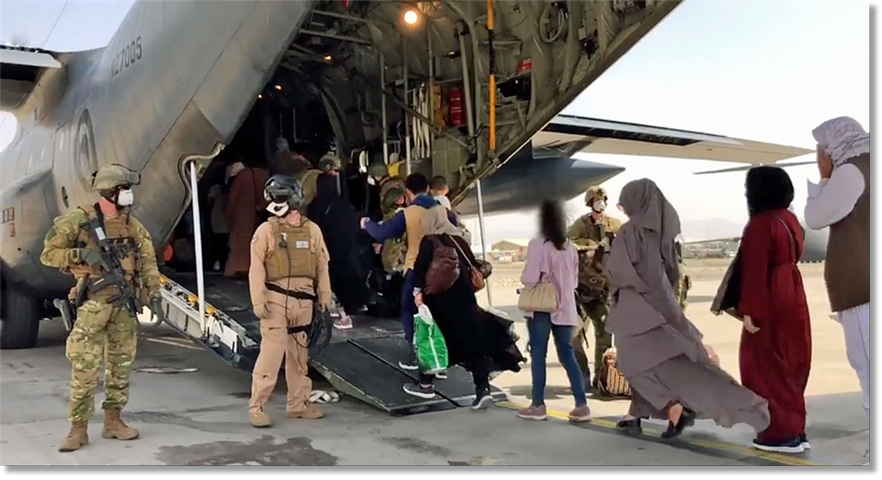
New Zealand Army soldiers used code words and messenger apps to help navigate "chaotic and dangerous" scenes to evacuate Kiwis in Afghanistan. However, having to leave some New Zealand visa holders behind weighed heavily on the minds of the Defence Force, Commander Joint Forces New Zealand Rear Admiral Jim Gilmour said. There were horrific scenes in the last days of evacuations as people clung to the bottom of planes as they took off from Kabul's main airport last month, fearful of being left behind and instead dropping to their deaths.
The Taliban took over the war-torn country last week and now the world remains on tenterhooks as to how it would be run, if women would be equal, or if it would resort back to its 1990s style.
Gilmour said the evacuation of Kiwis had been a huge multi-agency, international effort. "Our thoughts are with those New Zealand visa holders still in Afghanistan who wanted to evacuate but have been unable to," he said. While acknowledging those facing uncertainty in Afghanistan, he said he was proud of Defence Force personnel who "worked tirelessly to bring many others to safety here in New Zealand".
As part of the NZDF's Operation Kōkako, New Zealand Army soldiers were on the ground at Hamid Karzai International Airport in Kabul and used code words and instructions sent on messenger apps to help evacuees reach the soldiers, where they could be taken to safety within the airport perimeter.
The Royal New Zealand Air Force C-130 Hercules deployed on the mission completed three flights to Kabul, and had two more flights scheduled before being forced to pull out due to an imminent security threat that was realised just hours later with an attack claimed by Isis-K that left 170 civilians and 13 United States military dead, with many more injured.
Other members of the NZDF contingent were at a base in the United Arab Emirates, supporting evacuees prior to their onward travel to New Zealand.
Rear Admiral Gilmour said all those involved had worked through an "incredibly fluid and complex situation" to bring people to safety. He praised their efforts in evacuating New Zealand nationals, their families and other visa holders from Kabul following the takeover of Afghanistan by the Taliban. "There are real stories of bravery, initiative and professionalism among our personnel and equally of bravery and incredible resilience among evacuees."
Although NZDF deployed about 80 personnel on the operation, it was estimated that around 600 NZDF staff were involved in a range of activities from planning, logistics and co-ordination through to mobilisation in order to achieve the mission. Hundreds of staff from other Government agencies and thousands from international partners were involved in the humanitarian effort.
NZDF personnel involved with the Afghanistan evacuations returned to New Zealand and completed two weeks of managed isolation.
nzherald.co.nz
The Taliban took over the war-torn country last week and now the world remains on tenterhooks as to how it would be run, if women would be equal, or if it would resort back to its 1990s style.
Gilmour said the evacuation of Kiwis had been a huge multi-agency, international effort. "Our thoughts are with those New Zealand visa holders still in Afghanistan who wanted to evacuate but have been unable to," he said. While acknowledging those facing uncertainty in Afghanistan, he said he was proud of Defence Force personnel who "worked tirelessly to bring many others to safety here in New Zealand".
As part of the NZDF's Operation Kōkako, New Zealand Army soldiers were on the ground at Hamid Karzai International Airport in Kabul and used code words and instructions sent on messenger apps to help evacuees reach the soldiers, where they could be taken to safety within the airport perimeter.
The Royal New Zealand Air Force C-130 Hercules deployed on the mission completed three flights to Kabul, and had two more flights scheduled before being forced to pull out due to an imminent security threat that was realised just hours later with an attack claimed by Isis-K that left 170 civilians and 13 United States military dead, with many more injured.
Other members of the NZDF contingent were at a base in the United Arab Emirates, supporting evacuees prior to their onward travel to New Zealand.
Rear Admiral Gilmour said all those involved had worked through an "incredibly fluid and complex situation" to bring people to safety. He praised their efforts in evacuating New Zealand nationals, their families and other visa holders from Kabul following the takeover of Afghanistan by the Taliban. "There are real stories of bravery, initiative and professionalism among our personnel and equally of bravery and incredible resilience among evacuees."
Although NZDF deployed about 80 personnel on the operation, it was estimated that around 600 NZDF staff were involved in a range of activities from planning, logistics and co-ordination through to mobilisation in order to achieve the mission. Hundreds of staff from other Government agencies and thousands from international partners were involved in the humanitarian effort.
NZDF personnel involved with the Afghanistan evacuations returned to New Zealand and completed two weeks of managed isolation.
nzherald.co.nz

Photo of British airman holding Afghan baby
as exhausted mother sleeps goes viral
as exhausted mother sleeps goes viral
A British airman is being hailed as a hero after photos of him cradling an Afghan mother's two-week-old baby on a rescue flight out of Kabul went viral online. Sergeant Andy Livingstone, 31, an air loadmaster on the RAF A400M held the baby in his hands for almost two hours after he noticed that her barely conscious mother dropped her on the floor.
Livingstone was responsible for loading refugees and equipment onto the last rescue flight which took off from Kabul hours after the ISIS-K suicide bombing outside the Kabul airport.
The airman said that he first noticed the baby's mother was having trouble shortly after they took off.
"We got everyone on and this family caught my eye, a mum and dad, three sisters and a brother. One of the sisters was in the early stages of shock or exhaustion, so without any medics there we just cracked on giving her food and I was dealing with dad, ensuring he was able to give food and water to his family," Livingstone said.
The mother did not understand what the airman had said in English, however, she could comprehend that he would take care of the baby. She looked at the sergeant as if to say "is it okay? Can I go to sleep now? Is my baby going to be okay with you?" he recalled.
Livingstone was responsible for loading refugees and equipment onto the last rescue flight which took off from Kabul hours after the ISIS-K suicide bombing outside the Kabul airport.
The airman said that he first noticed the baby's mother was having trouble shortly after they took off.
"We got everyone on and this family caught my eye, a mum and dad, three sisters and a brother. One of the sisters was in the early stages of shock or exhaustion, so without any medics there we just cracked on giving her food and I was dealing with dad, ensuring he was able to give food and water to his family," Livingstone said.
The mother did not understand what the airman had said in English, however, she could comprehend that he would take care of the baby. She looked at the sergeant as if to say "is it okay? Can I go to sleep now? Is my baby going to be okay with you?" he recalled.
Sky News
He put a pair of ear deafeners on the little girl so that she could sleep peacefully during the two-hour journey to Dubai.
"I just did what anyone else would have done. I've got two little girls myself and you just want to help," he said.
"I just did what anyone else would have done. I've got two little girls myself and you just want to help," he said.

Afghanistan: ADF tells of ‘harrowing’ Kabul evacuation
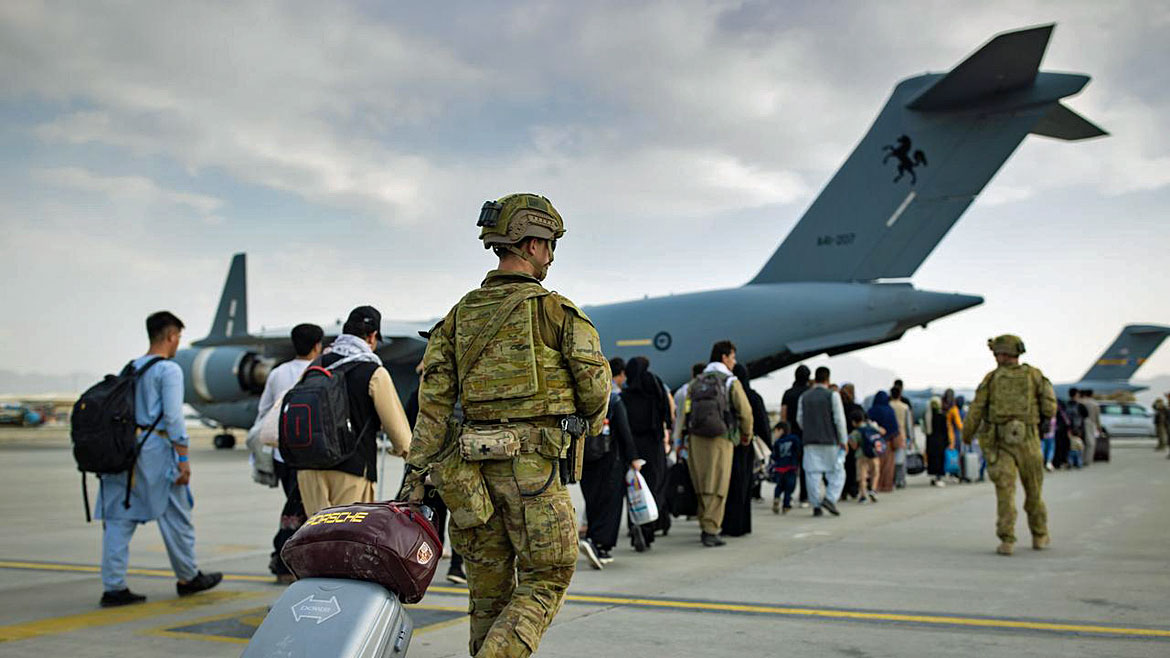
The Australian Defence Force has opened up on its “chaotic” rescue mission in Kabul where it helped evacuate 4100 people in 32 flights.
Joint Operations Command tweeted an overview of what was involved to get thousands of evacuees out of Kabul airport, which was the subject of a terrorist attack that killed 13 US service members and at least 90 Afghans: “The military mission was led by Commander Joint Task Force 633, Air Commodore David Paddison, with subordinate air, land, and support elements. Around 250 extra troops and four aircraft were deployed to augment those already in the Middle East,” the ADF said. “The first Australian evacuation flight occurred on 17 August. As the team established themselves at the airport, each subsequent flight would carry increasing numbers of evacuees. One C-17A carried more than 350 passengers, floor loaded.”
The ADF said that troops had to wear night vision googles to navigate the busy airspace and mountainous terrain, using eight air-to-air refuelling planes. “In less than three days, ADF engineers and contractors turned a bare patch of sand into a camp to cater for the needs of 450 evacuees, which then expanded to accommodate more than 3000,” Joint Operations Command tweeted. “Many evacuees were women and children. Some only days old, and some were born shortly following their evacuation flight.”
The ADF went on to say that the stories of those being evacuated “were harrowing, but hopeful. “For our soldiers at the airport gates, it was urgent, chaotic, and dangerous work. But their sense of purpose was absolute,” the ADF said. “Throughout the operation, the 1st Joint Movements Unit co-ordinated all flights to Afghanistan and back to Australian capital cities. They negotiated additional contracted aircraft, and managed relations with airports. Commercial airlines assisted as well.”
All up, the ADF evacuated more than 4100 people in 32 flights from Kabul. More than 3500 now call Australia home.
Defence Minister Peter Dutton claimed some Afghans who had worked with Australian troops had switched their allegiance to the Taliban and that it was proving difficult for Australian officials to prove their identity. He confirmed he rejected some people because of fear they may carry out a terrorist attack in Australia. “It’s the reality we’re dealing with,” he said, without revealing specific numbers. “Ascertaining someone’s identity is difficult in that part of the world.” There were an estimated 130 Australian citizens in Kabul when the city fell to the Taliban last week.
Prime Minister Scott Morrison praised the Australian military’s work in Kabul. “The people are doing this job on the ground, they are real heroes, compassionate heroes,” Mr Morrison said. “Dealing with people in the most distressing and dangerous of situations. Our ADF, our air force flying people in and out, those from three brigades there on the ground doing the job providing security and supporting people getting onto these planes, our Home Affairs officials, our Department of Foreign Affairs and Trade officials, they’re going through what is an extraordinarily intense time – and they’re getting people out.”
news.com.au
Joint Operations Command tweeted an overview of what was involved to get thousands of evacuees out of Kabul airport, which was the subject of a terrorist attack that killed 13 US service members and at least 90 Afghans: “The military mission was led by Commander Joint Task Force 633, Air Commodore David Paddison, with subordinate air, land, and support elements. Around 250 extra troops and four aircraft were deployed to augment those already in the Middle East,” the ADF said. “The first Australian evacuation flight occurred on 17 August. As the team established themselves at the airport, each subsequent flight would carry increasing numbers of evacuees. One C-17A carried more than 350 passengers, floor loaded.”
The ADF said that troops had to wear night vision googles to navigate the busy airspace and mountainous terrain, using eight air-to-air refuelling planes. “In less than three days, ADF engineers and contractors turned a bare patch of sand into a camp to cater for the needs of 450 evacuees, which then expanded to accommodate more than 3000,” Joint Operations Command tweeted. “Many evacuees were women and children. Some only days old, and some were born shortly following their evacuation flight.”
The ADF went on to say that the stories of those being evacuated “were harrowing, but hopeful. “For our soldiers at the airport gates, it was urgent, chaotic, and dangerous work. But their sense of purpose was absolute,” the ADF said. “Throughout the operation, the 1st Joint Movements Unit co-ordinated all flights to Afghanistan and back to Australian capital cities. They negotiated additional contracted aircraft, and managed relations with airports. Commercial airlines assisted as well.”
All up, the ADF evacuated more than 4100 people in 32 flights from Kabul. More than 3500 now call Australia home.
Defence Minister Peter Dutton claimed some Afghans who had worked with Australian troops had switched their allegiance to the Taliban and that it was proving difficult for Australian officials to prove their identity. He confirmed he rejected some people because of fear they may carry out a terrorist attack in Australia. “It’s the reality we’re dealing with,” he said, without revealing specific numbers. “Ascertaining someone’s identity is difficult in that part of the world.” There were an estimated 130 Australian citizens in Kabul when the city fell to the Taliban last week.
Prime Minister Scott Morrison praised the Australian military’s work in Kabul. “The people are doing this job on the ground, they are real heroes, compassionate heroes,” Mr Morrison said. “Dealing with people in the most distressing and dangerous of situations. Our ADF, our air force flying people in and out, those from three brigades there on the ground doing the job providing security and supporting people getting onto these planes, our Home Affairs officials, our Department of Foreign Affairs and Trade officials, they’re going through what is an extraordinarily intense time – and they’re getting people out.”
news.com.au

RCAF Operates Large Evacuation Flight from Kabul
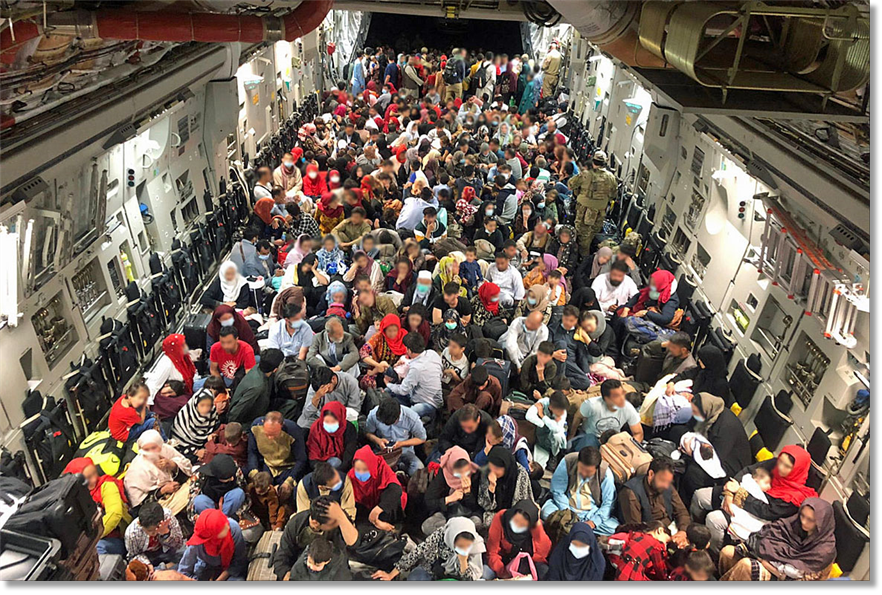
On Aug. 24, an RCAF CC-177 Globemaster III carried 506 people from Kabul – Canada’s largest evacuation flight to date
The CC-177 was one of two RCAF strategic lift aircraft participating in a multinational air bridge to evacuate citizens and Afghan nationals and families who have worked with coalition forces over the past 20 years, as the Taliban solidifies its grip on the country and the capital city. The aircraft and crews are from 429 Transport Squadron at 8 Wing Trenton, Ontario.
In a background briefing on Aug. 23, government officials said Canadian aircraft had conducted 13 flights and airlifted 1,700 Canadians and eligible Afghans from Kabul since Operation Aegis began.
According to CBC News, four of those flights took place since Aug. 19. About 188 people were on board the first flight, 106 on the second, 121 on the third, and 436 on the fourth. The flight on Aug. 24 would appear to be the largest to date. According to Global News, more than 200 of the 506 passengers were children.
In the briefing to media, government officials also confirmed that members of Canadian Special Operations Forces were on the ground outside Hamid Karzai International Airport, Kabul, to get Canadian citizens and eligible Afghan nationals through the security gates.
“For operational security reasons, for obvious reasons, I cannot divulge exactly what our troops are doing. One thing I can say: they have all of the flexibility to make all of the appropriate decisions so they can take action,” Sajjan said on Aug. 22, according to CBC.
Canada is among 13 countries participating in an air bridge agreement under which the allies are all transporting their citizens, foreign nationals, and Afghan nationals. U.S. President Joe Biden had suggested the airlift could continue beyond an initial Aug. 31 deadline, but a Taliban spokesperson told Sky News on Aug. 24 the new self-proclaimed Afghan government would not agree to an extension. There would be “consequences” if the “occupation” of the airport continues, he added.
skiesmag.com
In a background briefing on Aug. 23, government officials said Canadian aircraft had conducted 13 flights and airlifted 1,700 Canadians and eligible Afghans from Kabul since Operation Aegis began.
According to CBC News, four of those flights took place since Aug. 19. About 188 people were on board the first flight, 106 on the second, 121 on the third, and 436 on the fourth. The flight on Aug. 24 would appear to be the largest to date. According to Global News, more than 200 of the 506 passengers were children.
In the briefing to media, government officials also confirmed that members of Canadian Special Operations Forces were on the ground outside Hamid Karzai International Airport, Kabul, to get Canadian citizens and eligible Afghan nationals through the security gates.
“For operational security reasons, for obvious reasons, I cannot divulge exactly what our troops are doing. One thing I can say: they have all of the flexibility to make all of the appropriate decisions so they can take action,” Sajjan said on Aug. 22, according to CBC.
Canada is among 13 countries participating in an air bridge agreement under which the allies are all transporting their citizens, foreign nationals, and Afghan nationals. U.S. President Joe Biden had suggested the airlift could continue beyond an initial Aug. 31 deadline, but a Taliban spokesperson told Sky News on Aug. 24 the new self-proclaimed Afghan government would not agree to an extension. There would be “consequences” if the “occupation” of the airport continues, he added.
skiesmag.com

We need to talk about RAF Air Transport
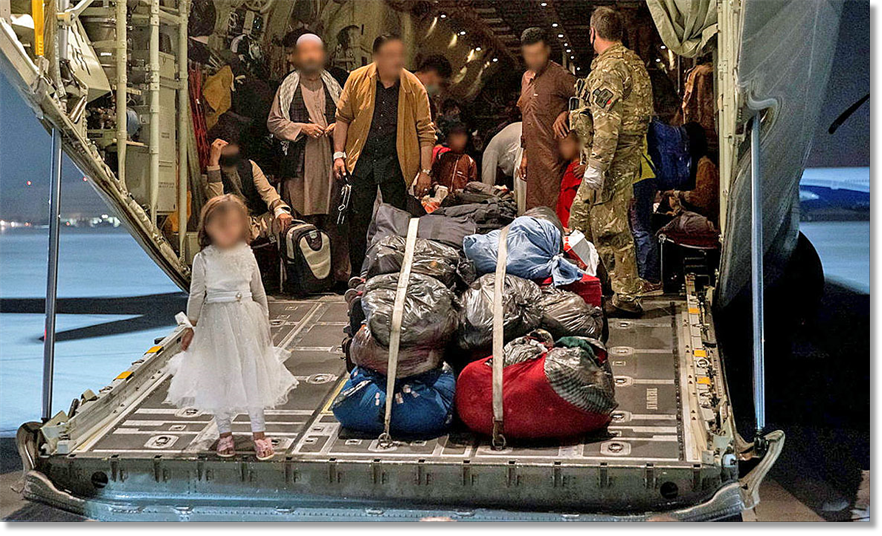
Evacuees from Afghanistan disembark an RAF C130
Twenty years ago (23 August 2001) UK Army soldiers arrived in Macedonia. They went there as part of a NATO mission to collect weapons from ethnic Albanian rebels as part of a ceasefire agreement. Like the air evacuation currently taking place in Afghanistan, the Army response was spearheaded by the Parachute Regiment. But, like during the last week, central to operations was the RAF Air Mobility Force.
A few days ahead of the Macedonia deployment, Dr Sophy Antrobus, then in charge of ASCOT operations overseeing RAF air transport around the world, was called to a Contingency Action Group meeting at RAF High Wycombe. Standard practice for a short notice task, the aim was to get all teams across the RAF from administration to force protection around the table to consider and to plan.
After a relatively short meeting, the senior officer in charge started to wrap up, summarising the operation as an Army event, so little more needed discussing in an RAF context. Sophy put her hand up and asked, a little sarcastically, ‘well, how are they going to get there?’. Nobody around the table had remembered that no operation like this happens without air transport. To their credit, they immediately apologised for the oversight and set to work discussing the transport challenges.
Two months later 9/11 happened and, again, air transport was absolutely key to the UK’s contribution to operations in Afghanistan. Kabul airport was austere (a wreck of an airport really), and the RAF’s aircraft were not equipped with the defensive equipment needed to safely land there. During their first sorties to Afghanistan some transport crews sat on cargo chains to protect themselves from ground fire; the RAF’s fast-jet senior leadership had considered providing body armour unnecessary.
Twenty years on, we are seeing the same centrality of air transport to military capability. 27% of sorties flown by the coalition in Afghanistan from 2014-2020 were air mobility flights. A figure only surpassed by intelligence, surveillance, and reconnaissance (ISR) sorties at 41%. Strike attack was just 18% and in 2020 the majority of sorties were ISR 39% and air transport 38%. And now we see the Non-Combatant Evacuation Operation (NEO) to rescue UK nationals and eligible Afghans from country after the apparently unforeseen capitulation of the Afghan Forces to the Taliban, following the United States’ precipitous withdrawal.
The operation has seen the RAF Air Mobility Force rise to the challenge of evacuating 1,000 people a day from Kabul airport. A steady stream of C-17s, A400M, Voyager, and C-130J aircraft take people from mortal danger and despair to safety and hope. This is not air mobility as an enabler for other force elements, as it is so often narrowly and incorrectly viewed by many in the RAF, never mind wider Defence. This is air mobility as air power: ‘influencing the behaviour of actors and course of events’ as it is defined in UK doctrine.
It therefore seems incredible that the MoD intends to cut the RAF Air Mobility Force by nearly 30% over the next two years. Even before the Kabul Airlift this looked strategically incoherent with the ‘Global Britain’ ambition set out in the Integrated Review. After the Kabul Airlift it looks reckless.
Critics may point out that the UK is unlikely to repeat its Afghanistan misadventure in the foreseeable future. And they are right. However, rising instability across the globe, coupled with large UK diasporas in some of the regions most at risk, make it hard to conclude this will be the UK’s last large NEO. Indeed, the next one could be much bigger.
We must hope the MoD will now rethink its cut to air mobility. Otherwise commanders in the future may find themselves repeating Sophy’s question: ‘how are they going to get there?’
wavellroom.com
A few days ahead of the Macedonia deployment, Dr Sophy Antrobus, then in charge of ASCOT operations overseeing RAF air transport around the world, was called to a Contingency Action Group meeting at RAF High Wycombe. Standard practice for a short notice task, the aim was to get all teams across the RAF from administration to force protection around the table to consider and to plan.
After a relatively short meeting, the senior officer in charge started to wrap up, summarising the operation as an Army event, so little more needed discussing in an RAF context. Sophy put her hand up and asked, a little sarcastically, ‘well, how are they going to get there?’. Nobody around the table had remembered that no operation like this happens without air transport. To their credit, they immediately apologised for the oversight and set to work discussing the transport challenges.
Two months later 9/11 happened and, again, air transport was absolutely key to the UK’s contribution to operations in Afghanistan. Kabul airport was austere (a wreck of an airport really), and the RAF’s aircraft were not equipped with the defensive equipment needed to safely land there. During their first sorties to Afghanistan some transport crews sat on cargo chains to protect themselves from ground fire; the RAF’s fast-jet senior leadership had considered providing body armour unnecessary.
Twenty years on, we are seeing the same centrality of air transport to military capability. 27% of sorties flown by the coalition in Afghanistan from 2014-2020 were air mobility flights. A figure only surpassed by intelligence, surveillance, and reconnaissance (ISR) sorties at 41%. Strike attack was just 18% and in 2020 the majority of sorties were ISR 39% and air transport 38%. And now we see the Non-Combatant Evacuation Operation (NEO) to rescue UK nationals and eligible Afghans from country after the apparently unforeseen capitulation of the Afghan Forces to the Taliban, following the United States’ precipitous withdrawal.
The operation has seen the RAF Air Mobility Force rise to the challenge of evacuating 1,000 people a day from Kabul airport. A steady stream of C-17s, A400M, Voyager, and C-130J aircraft take people from mortal danger and despair to safety and hope. This is not air mobility as an enabler for other force elements, as it is so often narrowly and incorrectly viewed by many in the RAF, never mind wider Defence. This is air mobility as air power: ‘influencing the behaviour of actors and course of events’ as it is defined in UK doctrine.
It therefore seems incredible that the MoD intends to cut the RAF Air Mobility Force by nearly 30% over the next two years. Even before the Kabul Airlift this looked strategically incoherent with the ‘Global Britain’ ambition set out in the Integrated Review. After the Kabul Airlift it looks reckless.
Critics may point out that the UK is unlikely to repeat its Afghanistan misadventure in the foreseeable future. And they are right. However, rising instability across the globe, coupled with large UK diasporas in some of the regions most at risk, make it hard to conclude this will be the UK’s last large NEO. Indeed, the next one could be much bigger.
We must hope the MoD will now rethink its cut to air mobility. Otherwise commanders in the future may find themselves repeating Sophy’s question: ‘how are they going to get there?’
wavellroom.com

From: Chris Goss, Marlow, Bucks
Subject: Memories of Afghanistan
Tony
I wish I had kept a diary and taken a camera as one month after 9/11 just after we had moved MQs having been posted from RAF Odiham to HQSTC, I got a knock on the door at 0730 hrs. It was Russ Huxtable who told me not to put on my uniform, get myself to work, then off to London to various embassies ending in "stan" and then to get to the Turkish Air Force HQ at Ankara for 1030 hrs on Friday.
Subject: Memories of Afghanistan
Tony
I wish I had kept a diary and taken a camera as one month after 9/11 just after we had moved MQs having been posted from RAF Odiham to HQSTC, I got a knock on the door at 0730 hrs. It was Russ Huxtable who told me not to put on my uniform, get myself to work, then off to London to various embassies ending in "stan" and then to get to the Turkish Air Force HQ at Ankara for 1030 hrs on Friday.
There were just two of us; the other chap was an armaments squadron leader. We were part of a multi-national team reporting to CENTCOM to try and find suitable airbases around Afghanistan.
I packed for 6 months, but after visiting most counties, we were back in 3 weeks, only to then go out again with the German army to identify the bases for themselves. Quite exciting - poor wife didn't have a clue where I was until I phoned and gave her the hint that I could see the Chinese border.
Too many stories to relate during the month and a half I was out there, apart from Russ and I devised a code and I would phone him first thing in the morning UK time to tell him what I had seen - most air bases were totally unsuitable and very little basic life support to such an extent that the conscripts at one base had a farm so they could feed themselves!
Regards
Chris
I packed for 6 months, but after visiting most counties, we were back in 3 weeks, only to then go out again with the German army to identify the bases for themselves. Quite exciting - poor wife didn't have a clue where I was until I phoned and gave her the hint that I could see the Chinese border.
Too many stories to relate during the month and a half I was out there, apart from Russ and I devised a code and I would phone him first thing in the morning UK time to tell him what I had seen - most air bases were totally unsuitable and very little basic life support to such an extent that the conscripts at one base had a farm so they could feed themselves!
Regards
Chris


Interviews with RAF Brize Norton Personnel on Operation PITTING
On the Lighter Side

Update on UK Veterans' ID Cards
Behind the scenes there is a lot of work going on at present across Government, the Charity sector and other providers to improve services for veterans, all linked to the Armed Forces Covenant.
The delay in offering an ID card more widely to veterans is partly so that the Department can complete work to consider how best a future card, or veterans identity approach, can support these services for veterans in the future. Unfortunately, this work is going to take more time to resolve and we don't currently have a date from which we can say cards will be available.
The delay in offering an ID card more widely to veterans is partly so that the Department can complete work to consider how best a future card, or veterans identity approach, can support these services for veterans in the future. Unfortunately, this work is going to take more time to resolve and we don't currently have a date from which we can say cards will be available.
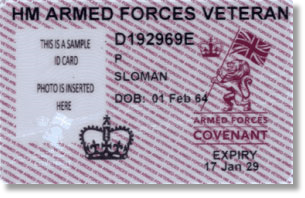
We will post updates on https://www.gov.uk/government/organisations/veterans-uk when more is known.

UK air force still not re-examining plans to retire C-130
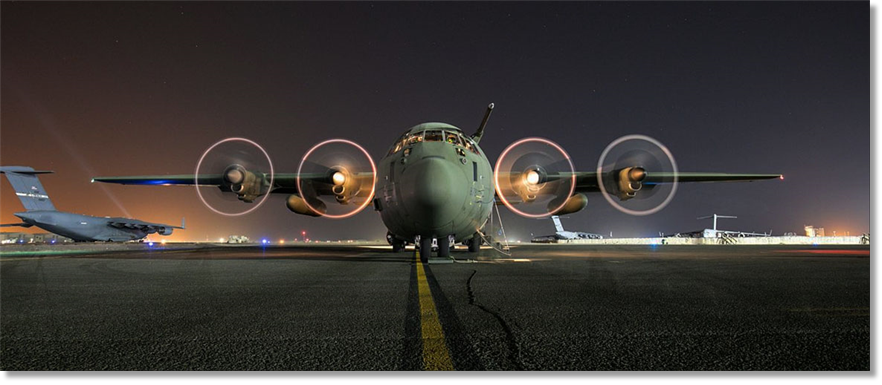
WASHINGTON — The arduous airlift demands of the Afghanistan evacuation mission haven’t changed the U.K. Royal Air Force’s plans to retire its C-130s by 2023, its top officer said on August 27. “This is the first large-scale operation that we’ve done with our A400s, and it’s demonstrated that this is an aircraft with real potential and enormous capacity,” said RAF Air Chief Marshal Mike Wigston in an interview with Defense News. “It flies much higher and much faster and carries a greater payload than the C-130. So as every month goes by, my confidence in that decision increases.”
The RAF ultimately transported more than 15,000 people out of Kabul from Aug. 14 to Aug. 28, according to the U.K. Ministry of Defence.
The RAF used about 15 aircraft during the evacuation mission, with half staged forward — transporting passengers from Kabul to other cities in the Middle East — and the other planes conducting flights from those cities to the United Kingdom, Wigston said. Over the two-week period, aircraft spotters frequently documented British C-17s, A400s and C-130s moving in and out of the airspace at Hamid Karzai International Airport.
In March, the defence ministry announced as part of a command review it would retire the RAF’s remaining 14 C-130Js by 2023. “Twenty-two A400Ms, alongside the C17s, will provide a more capable and flexible transport fleet,” U.K. Defence Secretary Ben Wallace said then.
Despite the C-130s offering additional airlift capacity, Wigston said there’s no need for the RAF to revisit its current retirement plans. “It will be with a heavy heart that we retire the C-130 in two years’ time because it’s been an absolute workhorse, but I have absolute confidence in the A400 and what that aircraft is able to do going forward,” he said.
So far, Airbus has delivered 20 A400M Atlas aircraft to the RAF.
defensenews.com
The RAF ultimately transported more than 15,000 people out of Kabul from Aug. 14 to Aug. 28, according to the U.K. Ministry of Defence.
The RAF used about 15 aircraft during the evacuation mission, with half staged forward — transporting passengers from Kabul to other cities in the Middle East — and the other planes conducting flights from those cities to the United Kingdom, Wigston said. Over the two-week period, aircraft spotters frequently documented British C-17s, A400s and C-130s moving in and out of the airspace at Hamid Karzai International Airport.
In March, the defence ministry announced as part of a command review it would retire the RAF’s remaining 14 C-130Js by 2023. “Twenty-two A400Ms, alongside the C17s, will provide a more capable and flexible transport fleet,” U.K. Defence Secretary Ben Wallace said then.
Despite the C-130s offering additional airlift capacity, Wigston said there’s no need for the RAF to revisit its current retirement plans. “It will be with a heavy heart that we retire the C-130 in two years’ time because it’s been an absolute workhorse, but I have absolute confidence in the A400 and what that aircraft is able to do going forward,” he said.
So far, Airbus has delivered 20 A400M Atlas aircraft to the RAF.
defensenews.com

From: John Bell, Birmingham
Subject: Noteworthy Faux Pas
Subject: Noteworthy Faux Pas
One of the regular scheduled flights to arrive at RAF Kai Tak was the Gurkha trooping flight from Nepal. As was the norm, the passengers were called forward to clear customs in order of seniority. This I did until I read the name Lt Colpant. By then all the captains, majors and colonels had been called and cleared customs. When I called his name a very angry Nepalese officer came over to me and accused me of being prejudiced. His English was not very good and I did not understand what he was saying. He cleared his baggage and left.
Regards,
John
John
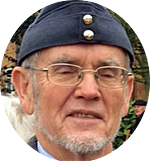
The following morning the SAMO, Squadron Leader Gil O’Toole, and the Commander RAF Kai Tak (CRAFHK) Air Commodore Frow, were summoned by the GOC In response to a serious complaint. On their return I was summoned to the SAMOs office and told that the Nepalese Ambassador to the UK had been on the Gurkha flight and had not been shown the necessary respect. It turned out that LT COLPANT was in fact LT COL PANT. The passenger manifest had shown his rank and name incorrectly and there was no mention of VIP status. After I produced a copy of the manifest and explained how this near diplomatic incident had come about no more was said.

From: Stephen Bird, Chester
Subject: Noteworthy Faux Pas
Hi Tony,
Nothing on Afghanistan as I had left before all of that really started. But have been immensely proud of those who have followed us in this trade group, who I imagine served in virtually intolerable conditions whilst doing the evacuations in recent weeks - thanks for your efforts!
Subject: Noteworthy Faux Pas
Hi Tony,
Nothing on Afghanistan as I had left before all of that really started. But have been immensely proud of those who have followed us in this trade group, who I imagine served in virtually intolerable conditions whilst doing the evacuations in recent weeks - thanks for your efforts!
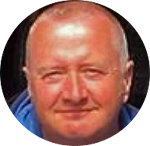
Now onto a passenger brief. Whilst serving in Gutersloh in the mid 80's, I worked in every role in GUT including pax, under John Guy, a fellow Northamptonion.
The one passenger brief which sticks in my mind was a normal trooper flight which occurred several times a week with a 30 minute turn around. It was a standard flight back to Luton but we had several VIP's on the flight or let's say those designated VIP's, it was always debatable who was a real VIP!
The one passenger brief which sticks in my mind was a normal trooper flight which occurred several times a week with a 30 minute turn around. It was a standard flight back to Luton but we had several VIP's on the flight or let's say those designated VIP's, it was always debatable who was a real VIP!
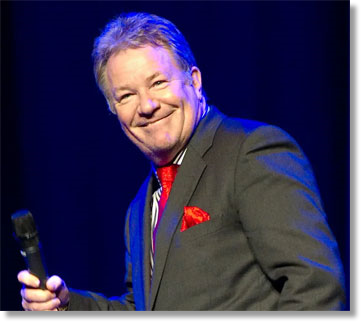
But back to the story. On this particular flight one of the VIP's was the comedian Jim Davidson, he was returning to the UK after a number of shows in RAFG/BOAR. We advised him that he could use the VIP Lounge, but Jim being Jim and a bit worse for wear after his previous night's antics, insisted on sitting amongst "his" troops.
At this point I started the standard passenger departure brief, and was only 30 seconds in when Jim took the microphone out of my hand and started an impromptu stand-up routine. I cannot remember it all in detail, but I am sure his fictitious mate "Chalky" would have been mentioned at some point. Anyway, after five mins or so, life returned to normal and all the passengers were boarded. I never got any feedback, but I should imagine the standard 60 plus minute flight back to Luton was far from normal with Jim on board!
At this point I started the standard passenger departure brief, and was only 30 seconds in when Jim took the microphone out of my hand and started an impromptu stand-up routine. I cannot remember it all in detail, but I am sure his fictitious mate "Chalky" would have been mentioned at some point. Anyway, after five mins or so, life returned to normal and all the passengers were boarded. I never got any feedback, but I should imagine the standard 60 plus minute flight back to Luton was far from normal with Jim on board!
The one thing which did come across to me in that brief meeting with Jim, was that he was a really nice bloke. He may now not sit comfortably in this PC world we live in but he did have a lot of time for HM Forces.
Regards,
Stephen
Regards,
Stephen

Royal Air Force trials self-driving cars
The Royal Air Force has been trialling the use of self-driving cars as it explores ways to free up personnel from mundane tasks on military bases.
Editor: <le sigh... >

From: Andrew Spinks, Falmouth, Cornwall
Subject: Noteworthy Faux Pas
Hi Tony,
It was July 1981 and the G7 meeting that year took place in Ottawa. Margaret Thatcher was the PM and I was the RAF Unit Cdr at CFB Ottawa (with the small unit comprising myself, Colin Allen, Clive Bishop and Mal Palfrey). Maggie always used to fly by VC10 and it was no different on this occasion. But, of relevance to this tale, the US President would also be flying in.
Subject: Noteworthy Faux Pas
Hi Tony,
It was July 1981 and the G7 meeting that year took place in Ottawa. Margaret Thatcher was the PM and I was the RAF Unit Cdr at CFB Ottawa (with the small unit comprising myself, Colin Allen, Clive Bishop and Mal Palfrey). Maggie always used to fly by VC10 and it was no different on this occasion. But, of relevance to this tale, the US President would also be flying in.
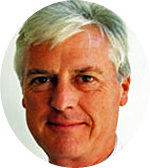
For any RAF arrival into CFB Ottawa, which was the same airfield as Ottawa International (YOW), we had to collect the Canada Customs officers from the civil side of the Airport and drive them to the military side, where we were collated with 3 AMU. It was a long drive on public roads but only a short drive airside, along a taxiway, for which we had a VHF radio fitted in the pick-up. A quick call to ATC to clear us on to the taxiway and a good lookout was all that was required; it was all fairly straightforward and our trusty Ford pick-up with rotating yellow lights on the roof used the callsign “Air Force One”.
Anyway, while Colin and crew prepared the steps and other ground equipment, off I went to pick up the Canada Customs officer for the VC10’s arrival.
Me: “Ottawa Ground, Air Force One requesting permission to enter Alpha".
It was perhaps unfortunate that, at the time, the real Air Force One Boeing 747 was also on the ground! Hence, Ottawa Tower: “Royal Air Force mobile, we had better give you another callsign otherwise things could get interesting… Use RAF Mobile now… RAF Mobile, clear to enter Alpha, please expedite”.
Anyway, while Colin and crew prepared the steps and other ground equipment, off I went to pick up the Canada Customs officer for the VC10’s arrival.
Me: “Ottawa Ground, Air Force One requesting permission to enter Alpha".
It was perhaps unfortunate that, at the time, the real Air Force One Boeing 747 was also on the ground! Hence, Ottawa Tower: “Royal Air Force mobile, we had better give you another callsign otherwise things could get interesting… Use RAF Mobile now… RAF Mobile, clear to enter Alpha, please expedite”.
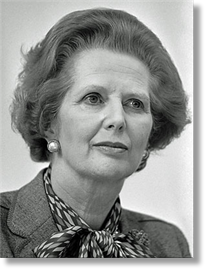
But that was not really a faux pas. What was more of one was when the PM departed after the G7. I was at the foot of the steps - as one had to be - and I was usually pretty good about chatting to the VIP (and non-VIP) pax when they were boarding. But for some strange reason, perhaps fearful of the PM’s reputation, I just stood bolt upright, saluted very smartly and looked straight ahead. She even thanked me and, with the benefit of hindsight, I guess she would have appreciated some response and, who knows, a little chat. But, stunned into silence as I was, I guess she decided it was not worthwhile pursuing the matter and climbed the steps.
I will always remember that day; it was not so much that I was rude in any way to our PM, it was just that it was so out of character for me not to be at ease with a passenger and not to at least wish her a pleasant flight. I always wondered what it would have been like to have a chat to her - or maybe she would just have climbed the steps anyway! A faux pas? Probably!
I will always remember that day; it was not so much that I was rude in any way to our PM, it was just that it was so out of character for me not to be at ease with a passenger and not to at least wish her a pleasant flight. I always wondered what it would have been like to have a chat to her - or maybe she would just have climbed the steps anyway! A faux pas? Probably!
Kind regards,
Andy
Andy

From: David Powell, Princes Risborough, Bucks
Subject: Subject Fox’s Parts
Dear Tony,
My biggest faux pas does have a movements twist but occurred many years, actually decades, since I had last signed off a trim sheet. Some of you pre-decimal coin vintage colleagues may remember a tall black haired smooth team leader from Abingdon days, one Brian Shorter. He then moved on from ramp tramping and spent much of his service career in the world of Mov Ops both at Upavon and then MoD. In the early 1990s, Brian was in MoD Main Building. Although I think I was still down the road in Neville House in the RAF Log Ops shop. In those days it was all strictly civilian rig.
Subject: Subject Fox’s Parts
Dear Tony,
My biggest faux pas does have a movements twist but occurred many years, actually decades, since I had last signed off a trim sheet. Some of you pre-decimal coin vintage colleagues may remember a tall black haired smooth team leader from Abingdon days, one Brian Shorter. He then moved on from ramp tramping and spent much of his service career in the world of Mov Ops both at Upavon and then MoD. In the early 1990s, Brian was in MoD Main Building. Although I think I was still down the road in Neville House in the RAF Log Ops shop. In those days it was all strictly civilian rig.
One morning I was trundling around one of the higher floors in Main Building when I spotted the unmistakable rear profile of Brian several yards away heading off down the corridor I had just entered. Obviously I hailed (bellowed?) with a typical mover’s colloquial greeting. I will leave you to imagine which one.
Brian stopped. Brian turned, to my horror revealing the quite well known and now seriously puzzled Commander RN (as he was then) Tim Laurence, the then to be or just was Mr Princess Anne! As a professional coward, I took evasive action with a swift diving turn to Port into the nearest open office door which thankfully was Mov Ops or was it Exercise Plans? At least friendly territory where I could claim bureaucratic asylum.
Happy Days.
Brian stopped. Brian turned, to my horror revealing the quite well known and now seriously puzzled Commander RN (as he was then) Tim Laurence, the then to be or just was Mr Princess Anne! As a professional coward, I took evasive action with a swift diving turn to Port into the nearest open office door which thankfully was Mov Ops or was it Exercise Plans? At least friendly territory where I could claim bureaucratic asylum.
Happy Days.
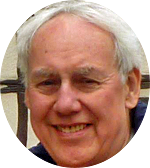
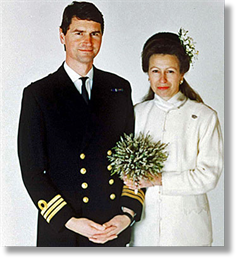
David Powell,
F Team UKMAMS, Abingdon
F Team UKMAMS, Abingdon

From: Jim Mckintosh, Glasgow, North Lanarkshire
Subject: Noteworthy Faux Pas
Hi Tony,
In 1961, as a young airman just 5 months out of training, I was stationed at Joint Service Continental Booking Centre, London (JSCBC). The offices were located at 5 Great Scotland Yard, Whitehall, which was the Central London Recruiting Depot for the Army and also the home of the Garrison Sergeant Major (GSM), London District. The GSM was responsible for organising all ceremonials in London including Trooping of the Colour and State Funerals and was an important Army figure.
Subject: Noteworthy Faux Pas
Hi Tony,
In 1961, as a young airman just 5 months out of training, I was stationed at Joint Service Continental Booking Centre, London (JSCBC). The offices were located at 5 Great Scotland Yard, Whitehall, which was the Central London Recruiting Depot for the Army and also the home of the Garrison Sergeant Major (GSM), London District. The GSM was responsible for organising all ceremonials in London including Trooping of the Colour and State Funerals and was an important Army figure.
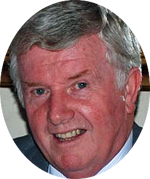
Our offices were located off the side of a large indoor courtyard which had a small NAAFI kiosk in the middle. The GSM and his men were located in the basement which was accessed via a stairway which was outside our office windows.
On 1st May “Shirt Sleeve Order” came into force for all London district personnel. For the Army this meant rolling up their shirt sleeves with an open necked shirt, whilst in the RAF at that time we wore shirts with detachable collars held in place by a collar stud, which meant we still had to wear a tie.
On 1st May “Shirt Sleeve Order” came into force for all London district personnel. For the Army this meant rolling up their shirt sleeves with an open necked shirt, whilst in the RAF at that time we wore shirts with detachable collars held in place by a collar stud, which meant we still had to wear a tie.
At about 1000hrs, I left our office for our NAAFI break with 2 Army colleagues, my sleeves neatly rolled up and wearing my tie. As we crossed the courtyard, a loud voice bellowed out,"You laddie, come here!"
This was the GSM standing at the top of the steps, resplendent in his No1 dress red tunic with gold braided rank badges (he must have been on his way out to some function). I stopped, shakingly, in front of him and he shouted out, ”What is the dress of the day laddie?”
My reply was “Shirt sleeve order, Sir.”
"Well" he said, “you are improperly dressed, get that tie off and open your shirt collar.”
"But sir...” I said.”
”Don't but me, get on with it!”
This was the GSM standing at the top of the steps, resplendent in his No1 dress red tunic with gold braided rank badges (he must have been on his way out to some function). I stopped, shakingly, in front of him and he shouted out, ”What is the dress of the day laddie?”
My reply was “Shirt sleeve order, Sir.”
"Well" he said, “you are improperly dressed, get that tie off and open your shirt collar.”
"But sir...” I said.”
”Don't but me, get on with it!”
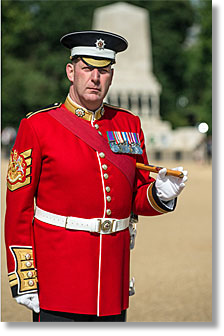
By this time I was visibly trembling and realised he did not have a clue about RAF dress, so I proceeded to take my tie off, loosened my collar stud and let my collar flap open. I can still see the look on his face! He never said another word, about turned and marched down the steps to the basement. That was his FAUX PAS
I went back into the office to adjust my dress and found the staff in fits of laughter as they had seen it all from the window. Our OC was a Major and I was escorted into his office and much to his amusement recounted my ordeal. Apparently it was the topic of conversation in the London district Sergeants' Mess for a few weeks, obviously not in the GSM’s presence!
Best wishes,
Jim
I went back into the office to adjust my dress and found the staff in fits of laughter as they had seen it all from the window. Our OC was a Major and I was escorted into his office and much to his amusement recounted my ordeal. Apparently it was the topic of conversation in the London district Sergeants' Mess for a few weeks, obviously not in the GSM’s presence!
Best wishes,
Jim

These poor highlanders had waited over 13 hours to depart and had been bussed multiple times up and down to Gateway House for food and a more comfortable waiting environment. The Duty Passenger Officer (DPaxO, always a lady), had called this band of Scottish Brothers back from Gateway and announced the imminent departure of their flight.
Just as she was about to call the troops through to the aircraft she was informed on her radio that the creeping delay had crept even further. She had no option but to announce that they would, once more, be bussed to Gateway House for another meal – adding were there any questions (ERROR!)? One young highlander stood and said, “But Ma'am – we’ve already just eaten.”
Before she could respond the RSM bellowed, “If the officer says you eat, yee’ll f*****g well eat!” The DPaxO turned a brighter shade of crimson and started looking for somewhere to hide. I was never quite sure who committed the faux pas but it was one of those memorable moments in movements!
Just as she was about to call the troops through to the aircraft she was informed on her radio that the creeping delay had crept even further. She had no option but to announce that they would, once more, be bussed to Gateway House for another meal – adding were there any questions (ERROR!)? One young highlander stood and said, “But Ma'am – we’ve already just eaten.”
Before she could respond the RSM bellowed, “If the officer says you eat, yee’ll f*****g well eat!” The DPaxO turned a brighter shade of crimson and started looking for somewhere to hide. I was never quite sure who committed the faux pas but it was one of those memorable moments in movements!
From: David Bernard, Bicester, Oxon
Subject: Noteworthy Faux Pas
Hello Tony,
My only input for “Noteworthy Faux Pas” is an event, which occurred when I was a DAMO on shift at Brize. A Company of the Argyle & Sutherland Highlanders were due to fly out on a very sick VC10, which had a ‘creeping delay’ caused by a severe and illusive hydraulic leak. The VC10’s muscle juice was something called ‘Skydrol’, which was corrosive, toxic and very poisonous stuff so the engineers took this Murphy’s Moment very seriously.
Subject: Noteworthy Faux Pas
Hello Tony,
My only input for “Noteworthy Faux Pas” is an event, which occurred when I was a DAMO on shift at Brize. A Company of the Argyle & Sutherland Highlanders were due to fly out on a very sick VC10, which had a ‘creeping delay’ caused by a severe and illusive hydraulic leak. The VC10’s muscle juice was something called ‘Skydrol’, which was corrosive, toxic and very poisonous stuff so the engineers took this Murphy’s Moment very seriously.

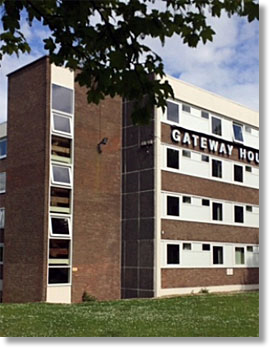
Best Wishes,
Dave
Dave

First ice flight for summer Antarctica season departs Christchurch
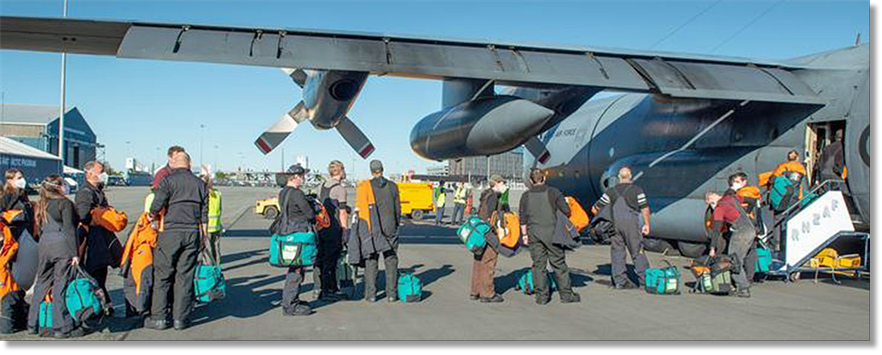
Scott Base staff boarding the Royal New Zealand Air Force C-130 before take-off.
After a false start involving some poor weather in Antarctica, the first lot of Scott Base summer staff have flown out of Christchurch today, marking the start of New Zealand's 2021/22 summer season. The team nearly got there earlier in the week, but the Royal New Zealand Air Force C-130 they were on board had to turn back after four and a half hours due to poor weather - what those involved call a "boomerang". Bad weather kept the flight on the ground Christchurch until today, and the Hercules took off at 9am for McMurdo Sound.
With a suitable weather window in place, the Hercules landed at Phoenix Airfield at 4.07pm, and was due to spend a short time on the ice before heading back to Christchurch. Antarctica New Zealand chief executive Sarah Williamson said the staff members were essential to running Scott Base safely and the organisation went to great lengths to ensure they arrived in Antarctica Covid-19 free.
"Adding a two-week isolation period and multiple Covid-19 tests to Antarctic pre-deployment is a big commitment for our people heading south this year, but we want to ensure we've done everything we can to keep Antarctica Covid-19 free," Williamson said. That commitment involved dedicated isolation in Canterbury before travel including several Covid-19 tests. "We are excited to be sending our base maintenance staff south, and to see the return of our team members that have been in Antarctica all winter."
Once at Scott Base, there was a carefully planned system for when new teams arrived and masks and physical distancing would be the new norm on base. Summer Scott Base staff will work in Antarctica for the next five months, while 12 staff will stay on throughout winter until October 2022. Due to Covid-19, fewer people will travel south this season compared with "normal" years.
RNZ News
With a suitable weather window in place, the Hercules landed at Phoenix Airfield at 4.07pm, and was due to spend a short time on the ice before heading back to Christchurch. Antarctica New Zealand chief executive Sarah Williamson said the staff members were essential to running Scott Base safely and the organisation went to great lengths to ensure they arrived in Antarctica Covid-19 free.
"Adding a two-week isolation period and multiple Covid-19 tests to Antarctic pre-deployment is a big commitment for our people heading south this year, but we want to ensure we've done everything we can to keep Antarctica Covid-19 free," Williamson said. That commitment involved dedicated isolation in Canterbury before travel including several Covid-19 tests. "We are excited to be sending our base maintenance staff south, and to see the return of our team members that have been in Antarctica all winter."
Once at Scott Base, there was a carefully planned system for when new teams arrived and masks and physical distancing would be the new norm on base. Summer Scott Base staff will work in Antarctica for the next five months, while 12 staff will stay on throughout winter until October 2022. Due to Covid-19, fewer people will travel south this season compared with "normal" years.
RNZ News
Chief of the Air Staff
Defence and Security Equipment International speech
Defence and Security Equipment International speech
15th September, 2021. At DSEI in 2019, I talked about the importance of adapting at pace to meet the threats of the future. That’s as relevant today as it was then; the key difference now is that my aspirations are supported by a mandate from government and a £24.1bn increase in Defence spending over the next 4 years. For the Royal Air Force, this offers a once-in-a-generation opportunity to build an air and space force fit for the future, able and ready to act decisively on a global stage, protecting our nation.
To achieve this, it falls to me to implement and deliver the Government’s intent at pace: to transform many areas of our business, to overhaul our culture, to drive forward cutting-edge equipment programmes, and to make tough calls to retire equipment that has increasingly limited utility in a modern battlespace.
To achieve this, it falls to me to implement and deliver the Government’s intent at pace: to transform many areas of our business, to overhaul our culture, to drive forward cutting-edge equipment programmes, and to make tough calls to retire equipment that has increasingly limited utility in a modern battlespace.
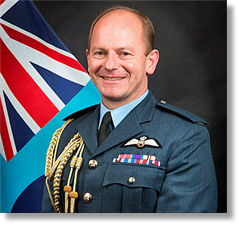
ACM Sir Michael Wigston
I need not labour the point to this audience but the revolutionary nature of air and space technology has always been about cooperation across government, industry, academia and the entire Defence and Security supply chain. Today, in this hyper-connected world, that collaboration has never been more important, enabling us to think innovatively, disrupt accepted norms and find novel ways to transform what we do.
The Royal Air Force has a unique relationship with our world-class aerospace and tech industries, reflecting your vital role in our security and prosperity. The combat air sector, for example, employs 46,000 highly skilled people, has a turnover of £6bn each year and makes up 85% of UK Defence exports. I want to take that relationship to a new level, building on those established partnerships as well as harnessing the innovation and agility of the UK’s small and medium enterprises and the cutting-edge technologies they create.
The Defence and Security Industrial Strategy is the basis for that new level of partnership with industry. It will ensure we have competitive, innovative and world-class defence and security industries that underpin national security now and into the future. It sets the foundations for reform of our acquisition and procurement policies, strengthening sovereign industry productivity and resilience, driving technology pull-through, and cohering our approach to international cooperation, exports and foreign investment.
The Royal Air Force has a unique relationship with our world-class aerospace and tech industries, reflecting your vital role in our security and prosperity. The combat air sector, for example, employs 46,000 highly skilled people, has a turnover of £6bn each year and makes up 85% of UK Defence exports. I want to take that relationship to a new level, building on those established partnerships as well as harnessing the innovation and agility of the UK’s small and medium enterprises and the cutting-edge technologies they create.
The Defence and Security Industrial Strategy is the basis for that new level of partnership with industry. It will ensure we have competitive, innovative and world-class defence and security industries that underpin national security now and into the future. It sets the foundations for reform of our acquisition and procurement policies, strengthening sovereign industry productivity and resilience, driving technology pull-through, and cohering our approach to international cooperation, exports and foreign investment.
Above all, I want to tap our shared collaborative energy, to innovate faster and to make the technological leaps the strategic context demands.
I have said before that the Royal Air Force was the 20th century’s original tech start-up. Our founders in 1918 were innovators and disrupters who had discovered this amazing new technology, understood its limitless potential, and had to rebel against the organisations they were part of at that time – the British Army and the Royal Navy – to properly harness that technology. That innovative and disruptive gene is still part of our Royal Air Force DNA, and it has been throughout our history, not least in 1940.
I couldn’t stand on a stage today and not mention that 15 September is Battle of Britain Day. The Battle of Britain was one of the most decisive battles of World War II, Hitler’s first strategic defeat, and the first decisive battle in history fought entirely in the air. Whilst we focus rightly on the bravery and skill of Churchill’s immortal few, the Battle was a collective national effort across the population, from the thousands of people working in factories to supply the aircraft and equipment so desperately needed at the frontline, to scientists inventing the world’s first radar network.
And this is where that innovative and disruptive RAF gene comes in because radar, like any technological innovation in isolation, is not enough. It’s what you do with it that matters.
In 1940, the Royal Air Force fielded what was then a truly ground-breaking new technology. But the Germans had radar too. In working out how to employ this novel capability, the RAF had two options: focus on Radar’s primary function – to detect enemy forces beyond visual range, or, consider why radar matters and how it might dovetail into a vision of a broader integrated detection, command and control system. The decision to think through the why and not just the what, was decisive. By contrast the Germans’ early use of their technologically high-quality radars was relatively inept because the wider conceptual thought as to why radar was significant was missing; and the rest is history.
The technology alone was not enough; it’s the culture of your organisation allows you to do with it that really makes the difference.
So, with that point in mind, over the next few minutes, I’m going to give you a taste of some of our current equipment programmes and where we owe it to our successors to be as innovative and disruptive as our forebears were in 1918 or 1940, or throughout our history.
I’m going to start with Air Mobility and I’m going to start that by expressing my utmost admiration for what our Air Mobility Force achieved to extract over 15,000 people from Kabul last month. Aircrew, groundcrew, movements support, industry and of course the cordon and process established on the ground by 16 Brigade, the Joint Force Headquarters, Government colleagues and our international allies.
I have said before that the Royal Air Force was the 20th century’s original tech start-up. Our founders in 1918 were innovators and disrupters who had discovered this amazing new technology, understood its limitless potential, and had to rebel against the organisations they were part of at that time – the British Army and the Royal Navy – to properly harness that technology. That innovative and disruptive gene is still part of our Royal Air Force DNA, and it has been throughout our history, not least in 1940.
I couldn’t stand on a stage today and not mention that 15 September is Battle of Britain Day. The Battle of Britain was one of the most decisive battles of World War II, Hitler’s first strategic defeat, and the first decisive battle in history fought entirely in the air. Whilst we focus rightly on the bravery and skill of Churchill’s immortal few, the Battle was a collective national effort across the population, from the thousands of people working in factories to supply the aircraft and equipment so desperately needed at the frontline, to scientists inventing the world’s first radar network.
And this is where that innovative and disruptive RAF gene comes in because radar, like any technological innovation in isolation, is not enough. It’s what you do with it that matters.
In 1940, the Royal Air Force fielded what was then a truly ground-breaking new technology. But the Germans had radar too. In working out how to employ this novel capability, the RAF had two options: focus on Radar’s primary function – to detect enemy forces beyond visual range, or, consider why radar matters and how it might dovetail into a vision of a broader integrated detection, command and control system. The decision to think through the why and not just the what, was decisive. By contrast the Germans’ early use of their technologically high-quality radars was relatively inept because the wider conceptual thought as to why radar was significant was missing; and the rest is history.
The technology alone was not enough; it’s the culture of your organisation allows you to do with it that really makes the difference.
So, with that point in mind, over the next few minutes, I’m going to give you a taste of some of our current equipment programmes and where we owe it to our successors to be as innovative and disruptive as our forebears were in 1918 or 1940, or throughout our history.
I’m going to start with Air Mobility and I’m going to start that by expressing my utmost admiration for what our Air Mobility Force achieved to extract over 15,000 people from Kabul last month. Aircrew, groundcrew, movements support, industry and of course the cordon and process established on the ground by 16 Brigade, the Joint Force Headquarters, Government colleagues and our international allies.
It was the largest Royal Air Force airlift since Berlin in 1948. Up to 5 x C17, 3 x Voyager, 2 x A400M and 2 x C130J were involved on any day, and we flew 84 sorties out of Kabul, we supported people from 38 countries. We saw bravery, immense good judgement, professionalism and overwhelming compassion. As an Air Chief, I could not have been more proud of our Service and I am sure I speak for everyone in this room in saying that.
We right celebrate the role of our people on that mission, but the operation confirmed too the adaptability of Voyager, the cavernous utility of the C17, it demonstrated yet again why Hercules has been our workhorse for over 50 years, and it was our first real taste of the remarkable operational utility of the A400M Atlas.
The Integrated Review recognised the potential of the Atlas and week by week we are expanding its operational clearances ready to take the load, literally, from 2023.
Disaster relief operations in the Caribbean, Indonesia and Mozambique have already shown us that each Atlas can take the equivalent of three Hercules freight loads into harm’s way. Atlas is already capable of airdropping more stores by weight than any RAF air transport aircraft that preceded it. We have cleared Atlas to operate from unprepared strips such as beaches and desert; and this week it has been conducting its first Air to Air Refueling sorties, with the RAF’s Voyager tankers, further extending its already eye-catching reach.
As we expand Atlas’s operating envelope, the temptation would be to read across tactics and procedures directly from the Hercules. To do that would be an error and a failure to capitalize on everything this remarkable aircraft offers; its performance and capability demands an entirely different approach. The technology alone is not enough, it’s what the culture of your organisation allows you to do with it that really makes the difference.
During the Kabul evacuation, we had tremendous availability and reliability across all our platforms, not least the C17s. Our 8 aircraft have been in service with the RAF for 20 years this year, and I’m delighted we’ve just announced another £324 million upgrade programme, enhancing its communications, cockpit displays and parachute delivery systems. That will also mean an additional 50 jobs at RAF Brize Norton and, above all, a massive vote of confidence that our strategic airlifter will be in service for many more years to come.
Our approach to this year’s Integrated Review was about the threat, the utility of air and space power, and about technological innovation. In those terms, we would all recognise the strategic significance of the £2bn investment over the next four years in the Future Combat Air System that will begin to replace Typhoon from the late 2030s. We’re taking a revolutionary approach, looking at a game-changing mix of swarming drones, and mixed formations of un-crewed combat aircraft as well as next-generation piloted aircraft like Tempest.
We right celebrate the role of our people on that mission, but the operation confirmed too the adaptability of Voyager, the cavernous utility of the C17, it demonstrated yet again why Hercules has been our workhorse for over 50 years, and it was our first real taste of the remarkable operational utility of the A400M Atlas.
The Integrated Review recognised the potential of the Atlas and week by week we are expanding its operational clearances ready to take the load, literally, from 2023.
Disaster relief operations in the Caribbean, Indonesia and Mozambique have already shown us that each Atlas can take the equivalent of three Hercules freight loads into harm’s way. Atlas is already capable of airdropping more stores by weight than any RAF air transport aircraft that preceded it. We have cleared Atlas to operate from unprepared strips such as beaches and desert; and this week it has been conducting its first Air to Air Refueling sorties, with the RAF’s Voyager tankers, further extending its already eye-catching reach.
As we expand Atlas’s operating envelope, the temptation would be to read across tactics and procedures directly from the Hercules. To do that would be an error and a failure to capitalize on everything this remarkable aircraft offers; its performance and capability demands an entirely different approach. The technology alone is not enough, it’s what the culture of your organisation allows you to do with it that really makes the difference.
During the Kabul evacuation, we had tremendous availability and reliability across all our platforms, not least the C17s. Our 8 aircraft have been in service with the RAF for 20 years this year, and I’m delighted we’ve just announced another £324 million upgrade programme, enhancing its communications, cockpit displays and parachute delivery systems. That will also mean an additional 50 jobs at RAF Brize Norton and, above all, a massive vote of confidence that our strategic airlifter will be in service for many more years to come.
Our approach to this year’s Integrated Review was about the threat, the utility of air and space power, and about technological innovation. In those terms, we would all recognise the strategic significance of the £2bn investment over the next four years in the Future Combat Air System that will begin to replace Typhoon from the late 2030s. We’re taking a revolutionary approach, looking at a game-changing mix of swarming drones, and mixed formations of un-crewed combat aircraft as well as next-generation piloted aircraft like Tempest.
Tempest is not just hardware. It is about the weapons, the sensors, its battlespace connectivity, and how information is moved around its network. Tempest will exploit our world class industrial base, pairing our brightest minds with game-changing digital ways of working. Our investment will create thousands of new opportunities for highly skilled work, including 2,500 apprenticeships in the UK over the next five years as we seek to recruit the best young talent for a ‘Generation Tempest’ workforce. We will only succeed, however, if we break from the industrial age spiral of ever greater complexity, cost and time. It will require innovation and disruption across the enterprise, design cycles in hours not weeks, and in-Service spiral development. We can do all this, but only if the culture of our respective organisations, and our enterprise as a whole, allows us too.
Project Mosquito, our autonomous combat aircraft has continued to advance at pace, building on the £30m contract awarded to the Spirit Aerospace-led Team Mosquito to design and manufacture a demonstrator that could form part of the Combat Air force mix. In collaboration with the RAF Rapid Capabilities Office and DSTL, as well as Northrop Grumman UK and Intrepid Minds, Team Mosquito are working hard to meet our objectives of proving dramatic cost and timescale reductions using enhanced digital design and pioneering manufacturing technologies. The physical models now on display in the RAF Zone are representative and reflect the developing maturity of the design. They are displayed in scale matching the Tempest model, representing a potential four-ship of the future.
This is a game-changing project, in every sense, and it is going really well. So much so, that I’m confident enough to announce that we will see the Mosquito demonstrator flying in UK airspace by the end of 2023, perhaps even for DSEI 23. In July I shared some of the tremendous success of Project Alvina and our Experimental Swarming Drone Squadron, 216 (X) Sqn. I revealed my intent to declare it operational with multiple fielded squadrons whose initial mission will be to confuse and overwhelm enemy air-defence systems.
Our future fleet of drones will be agile in design and rapid in manufacture. The operational swarms are likely to be a mix of drones of different sizes, range and endurance, each carrying a variety of bespoke payloads including electronic attack and more.
The latest ALVINA trial was conducted in August testing additional payloads and communications systems on multiple platforms; we’ve flown swarms of over 20 drones to eye-catching effect, with the next trial in October as development continues at pace. This project is innovative and disruptive in the finest traditions of the Royal Air Force, and with enormous potential. If you want a taste of that, do visit the RAF stand where some of our swarming concept drones are on display.
Some of you will have seen that the Secretary of State and I were at RAF Waddington last week, to view the Sky Guardian Protector prototype and announce a £94 million investment in the station infrastructure in readiness for Protector’s arrival.
Project Mosquito, our autonomous combat aircraft has continued to advance at pace, building on the £30m contract awarded to the Spirit Aerospace-led Team Mosquito to design and manufacture a demonstrator that could form part of the Combat Air force mix. In collaboration with the RAF Rapid Capabilities Office and DSTL, as well as Northrop Grumman UK and Intrepid Minds, Team Mosquito are working hard to meet our objectives of proving dramatic cost and timescale reductions using enhanced digital design and pioneering manufacturing technologies. The physical models now on display in the RAF Zone are representative and reflect the developing maturity of the design. They are displayed in scale matching the Tempest model, representing a potential four-ship of the future.
This is a game-changing project, in every sense, and it is going really well. So much so, that I’m confident enough to announce that we will see the Mosquito demonstrator flying in UK airspace by the end of 2023, perhaps even for DSEI 23. In July I shared some of the tremendous success of Project Alvina and our Experimental Swarming Drone Squadron, 216 (X) Sqn. I revealed my intent to declare it operational with multiple fielded squadrons whose initial mission will be to confuse and overwhelm enemy air-defence systems.
Our future fleet of drones will be agile in design and rapid in manufacture. The operational swarms are likely to be a mix of drones of different sizes, range and endurance, each carrying a variety of bespoke payloads including electronic attack and more.
The latest ALVINA trial was conducted in August testing additional payloads and communications systems on multiple platforms; we’ve flown swarms of over 20 drones to eye-catching effect, with the next trial in October as development continues at pace. This project is innovative and disruptive in the finest traditions of the Royal Air Force, and with enormous potential. If you want a taste of that, do visit the RAF stand where some of our swarming concept drones are on display.
Some of you will have seen that the Secretary of State and I were at RAF Waddington last week, to view the Sky Guardian Protector prototype and announce a £94 million investment in the station infrastructure in readiness for Protector’s arrival.
This programme represents the very best of the UK’s agile approach to defence procurement. The collaboration between the RAF, General Atomics and 12 UK industry partners will see £400m re-invested into the UK economy with the potential to rise to £1Bn. UK industry has contributed to every part of the aircraft system, from computer modules to engine development, the tail, weapons and logistical support.
Protector will enter RAF service in 2023 and be declared operational in 2024 as the successor to Reaper. We will have two squadrons, and we have already declared the first squadron will be 31 Squadron. I am delighted to announce that the second Protector squadron will indeed be 13 Squadron, a fitting allocation for a historic squadron, long associated with the RPAS role.
Protector represents a giant leap forward in technology and aircraft performance over its predecessor Reaper. Equipped with cutting-edge sensors, automatic take-off, landing and flight modes, and UK weapons, Protector can fly further for longer, from many more places around the world, with a much wider range of potential missions from flood monitoring, to maritime patrol, to strikes on violent extremists who would do us harm. This aircraft will enable our Government to act on a world stage within hours, at range, and precisely.
Just as with Atlas, if we treat Protector merely as an upgrade to Reaper and simply read across tactics and procedures, we will have failed to capitalize on what this remarkable platform offers. The technology alone is not enough remember, it’s what you do with it that matters.
Belgium and Australia are already signed up to the programme and up to 30 other air forces have expressed interest. There is enormous potential for like-minded allies to train together, and pool development and sustainment costs. And there is enormous potential for the UK and the Royal Air Force to be at the vanguard of this international programme, which is what that investment at Waddington will enable.
In our next-generation Air Force, we are going to rely ever more on synthetic training and force generation, freeing up live flying for real world operations, and in secure synthetic environments practicing tactics and using classified equipment that we do not want to share with a potential adversary.
While at Waddington, we were also able to show the Secretary of State our new Gladiator distributed simulation system, part of the cross-domain Defence Operational Training Capability or DOTC as you may have heard it called. I anticipate declaring IOC early next year on this state of the art facility and network. With highly classified, ultra-realistic simulation supported by an expert workforce at RAF Waddington, Gladiator will link a network of advanced flight and mission simulators at our air and naval bases and barracks across the UK and we are already investing an additional £40M to introduce the next tranche of platforms to join Gladiator, including Protector and Type 45 Destroyers, as well as artificial intelligence applications and our NEXUS Combat Cloud.
Protector will enter RAF service in 2023 and be declared operational in 2024 as the successor to Reaper. We will have two squadrons, and we have already declared the first squadron will be 31 Squadron. I am delighted to announce that the second Protector squadron will indeed be 13 Squadron, a fitting allocation for a historic squadron, long associated with the RPAS role.
Protector represents a giant leap forward in technology and aircraft performance over its predecessor Reaper. Equipped with cutting-edge sensors, automatic take-off, landing and flight modes, and UK weapons, Protector can fly further for longer, from many more places around the world, with a much wider range of potential missions from flood monitoring, to maritime patrol, to strikes on violent extremists who would do us harm. This aircraft will enable our Government to act on a world stage within hours, at range, and precisely.
Just as with Atlas, if we treat Protector merely as an upgrade to Reaper and simply read across tactics and procedures, we will have failed to capitalize on what this remarkable platform offers. The technology alone is not enough remember, it’s what you do with it that matters.
Belgium and Australia are already signed up to the programme and up to 30 other air forces have expressed interest. There is enormous potential for like-minded allies to train together, and pool development and sustainment costs. And there is enormous potential for the UK and the Royal Air Force to be at the vanguard of this international programme, which is what that investment at Waddington will enable.
In our next-generation Air Force, we are going to rely ever more on synthetic training and force generation, freeing up live flying for real world operations, and in secure synthetic environments practicing tactics and using classified equipment that we do not want to share with a potential adversary.
While at Waddington, we were also able to show the Secretary of State our new Gladiator distributed simulation system, part of the cross-domain Defence Operational Training Capability or DOTC as you may have heard it called. I anticipate declaring IOC early next year on this state of the art facility and network. With highly classified, ultra-realistic simulation supported by an expert workforce at RAF Waddington, Gladiator will link a network of advanced flight and mission simulators at our air and naval bases and barracks across the UK and we are already investing an additional £40M to introduce the next tranche of platforms to join Gladiator, including Protector and Type 45 Destroyers, as well as artificial intelligence applications and our NEXUS Combat Cloud.
Since I last spoke at DSEI, we have conceived, developed and delivered UK Space Command at RAF High Wycombe on behalf of all of the UK Ministry of Defence. I have spoken on many occasions about the criticality of the Space Domain to national security and to the functioning of our society, as well as its vital contribution to operations in all domains. Our rapid establishment of UK Space Command reflects that overwhelming imperative.
To protect and defend our interests in Space, we must continue to build our understanding of this increasingly contested and congested domain, and our ability to protect and defend our interests there. The UK Integrated Review allocated an additional £1.4Bn in defence Space funding over the next ten years on top of the £5Bn we are spending on our Skynet communications programme. That spend will will enable us to develop UK Space Command, enhance our space domain awareness, develop a sovereign multi-spectral ISR constellation and create a training capability for our Defence space specialists.
The multi-spectral Space ISR programme, called programme ISTARI, will bring together existing Defence space-based ISR R&D projects such as our CARBONITE satellite to produce a set of sensors that not only meets the UK’s requirements but also supports those of our allies. This will deliver intelligence to the tactical warfighter or strategic decision-maker at the speed of relevance.
In parallel, we are exploring partnership options with the US on the Deep Space Advanced Radar Capability which will enable us to monitor our critical platforms in space, all the way out to the geostationary orbits, 22,000 miles away.
As with everything else I’ve highlighted today, this has to be much more than just an equipment programme. Space has always been a collaborative enterprise between government and the private sector, international allies, and Defence, scientific and commercial interests. That is the approach we have taken as we establish UK Space Command and tap into the UK’s thriving Space industry to maximise innovation and rapid capability development. UK Space Command has already embedded UK Space Agency staff alongside commercial partners within the Space Operations Centre, and we offer a vital link to enhance Space Domain Awareness for all space users as we track, catalogue and monitor potential Space collisions 24/7 365.
Space is of rapidly escalating importance, and so is climate change.
Climate change is a transnational challenge that threatens global resilience and our shared security and prosperity. Significant action to decarbonise the global economy is required urgently to prevent climate change from accelerating rapidly and possibly irreversibly. We know that collectively our armed forces are responsible for a high proportion of UK Government emissions and, within that, Air and Space activity represents a significant element. My carbon problem, is the Ministry of Defence’s carbon problem, which is the UK Government’s problem.
To protect and defend our interests in Space, we must continue to build our understanding of this increasingly contested and congested domain, and our ability to protect and defend our interests there. The UK Integrated Review allocated an additional £1.4Bn in defence Space funding over the next ten years on top of the £5Bn we are spending on our Skynet communications programme. That spend will will enable us to develop UK Space Command, enhance our space domain awareness, develop a sovereign multi-spectral ISR constellation and create a training capability for our Defence space specialists.
The multi-spectral Space ISR programme, called programme ISTARI, will bring together existing Defence space-based ISR R&D projects such as our CARBONITE satellite to produce a set of sensors that not only meets the UK’s requirements but also supports those of our allies. This will deliver intelligence to the tactical warfighter or strategic decision-maker at the speed of relevance.
In parallel, we are exploring partnership options with the US on the Deep Space Advanced Radar Capability which will enable us to monitor our critical platforms in space, all the way out to the geostationary orbits, 22,000 miles away.
As with everything else I’ve highlighted today, this has to be much more than just an equipment programme. Space has always been a collaborative enterprise between government and the private sector, international allies, and Defence, scientific and commercial interests. That is the approach we have taken as we establish UK Space Command and tap into the UK’s thriving Space industry to maximise innovation and rapid capability development. UK Space Command has already embedded UK Space Agency staff alongside commercial partners within the Space Operations Centre, and we offer a vital link to enhance Space Domain Awareness for all space users as we track, catalogue and monitor potential Space collisions 24/7 365.
Space is of rapidly escalating importance, and so is climate change.
Climate change is a transnational challenge that threatens global resilience and our shared security and prosperity. Significant action to decarbonise the global economy is required urgently to prevent climate change from accelerating rapidly and possibly irreversibly. We know that collectively our armed forces are responsible for a high proportion of UK Government emissions and, within that, Air and Space activity represents a significant element. My carbon problem, is the Ministry of Defence’s carbon problem, which is the UK Government’s problem.
I am determined to tackle this head on and so have set the Royal Air Force the ambitious challenge to be Net Zero by 2040. The changes required will be far-reaching and have to address all aspects of what we do, including our expectations of you our industry partners and supply chain too. It will mean changes to how we are structured, operate and equip ourselves and lead us to synthetic aviation fuels, and alternative aircraft propulsion.
I have already initiated work to get our air platforms 100% synthetic aviation fuel ready, and I am determined we will have our first zero emission aircraft operational by the end of this decade. Much of this will be done on the back of what the commercial aviation sector is doing, and the UK has taken a world leading position in that regard. A large part of this is about commercialising sustainable aviation fuel production and making sure that it’s cost-effectively widely and available, because our RAF platforms are already able to operate on 50:50 blend today, and we would if an assured supply was there.
I am conscious this is not something the Royal Air Force can achieve in isolation and we have to take this journey in partnership with industry, drawing on the power of our collective resources and growing expertise to address this pressing challenge. The imperative is clear: our political leaders and public increasingly demand it of us, and I am sure it is the same in industry as it is in the RAF, that a new generation of employees demands it of their leaders.
To conclude, whether it is radar in 1940, net-zero emissions, space, Atlas, Protector or Tempest, the technology alone is not enough; it’s what the culture of your organisation allows you to do with it that really makes the difference. And that, of course is about our people. Whilst our aircraft, equipment and technology are essential to what we do it is the enduring quality and talent of our people that give the Royal Air Force its innovative, disruptive and decisive edge. That was as true at our foundation in 1918, as it was in the Battle of Britain, as it was in Kabul last month, as it will be long into the future. There can be no higher priority than ensuring we can continue to attract, recruit and sustain the highly skilled and diverse workforce we need from across every part of the UK population. Not only is this the right thing to do at a personal level, our future success as an Air Force depends on it because that innovative and disruptive talent is needed now more than ever in the face of an extraordinary rate of technological change, supercharged by leaps in digital and quantum technology. That, I would offer, is one of the most profound challenges of the age for us as air and space leaders, whether in Defence or in our aerospace and tech industries, and it falls to us now to set those conditions for future success.
Thank you
Gov.uk
I have already initiated work to get our air platforms 100% synthetic aviation fuel ready, and I am determined we will have our first zero emission aircraft operational by the end of this decade. Much of this will be done on the back of what the commercial aviation sector is doing, and the UK has taken a world leading position in that regard. A large part of this is about commercialising sustainable aviation fuel production and making sure that it’s cost-effectively widely and available, because our RAF platforms are already able to operate on 50:50 blend today, and we would if an assured supply was there.
I am conscious this is not something the Royal Air Force can achieve in isolation and we have to take this journey in partnership with industry, drawing on the power of our collective resources and growing expertise to address this pressing challenge. The imperative is clear: our political leaders and public increasingly demand it of us, and I am sure it is the same in industry as it is in the RAF, that a new generation of employees demands it of their leaders.
To conclude, whether it is radar in 1940, net-zero emissions, space, Atlas, Protector or Tempest, the technology alone is not enough; it’s what the culture of your organisation allows you to do with it that really makes the difference. And that, of course is about our people. Whilst our aircraft, equipment and technology are essential to what we do it is the enduring quality and talent of our people that give the Royal Air Force its innovative, disruptive and decisive edge. That was as true at our foundation in 1918, as it was in the Battle of Britain, as it was in Kabul last month, as it will be long into the future. There can be no higher priority than ensuring we can continue to attract, recruit and sustain the highly skilled and diverse workforce we need from across every part of the UK population. Not only is this the right thing to do at a personal level, our future success as an Air Force depends on it because that innovative and disruptive talent is needed now more than ever in the face of an extraordinary rate of technological change, supercharged by leaps in digital and quantum technology. That, I would offer, is one of the most profound challenges of the age for us as air and space leaders, whether in Defence or in our aerospace and tech industries, and it falls to us now to set those conditions for future success.
Thank you
Gov.uk

From: Syd Avery, Guardamar del Segura, Alicante
Subject: Memories of Afghanistan
Hi Tony,
Lots of memories of Afghanistan, but two spring to mind.
Subject: Memories of Afghanistan
Hi Tony,
Lots of memories of Afghanistan, but two spring to mind.
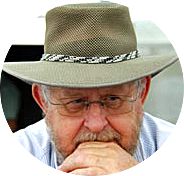
Air Foyle Antonov had a contract with the Luftwaffe for a schedule Cologne-Kabul, using the An124. Crewed by Ukrainians with an Air Foyle Flight Manager. The Ukrainian Flight Manager on this particular run was Oles, a young Ukrainian with "attitude", I believe is the expression.
Now Oles was unique in that for one so young, he was detested by all and was very difficult to control when necessary. We landed in Kabul, and for some reason Oles wanted to go to the terminal, which was a few hundred metres across a grassed/scree area. Off went Oles. One of the Germans screamed to him to stop, come back. Oles turned and flipped the bird to all, and carried on walking. All and sundry stood with bated breath watching and waiting... The German chappie told us that our beloved Oles was walking through a minefield! Not one damned mine did he touch. Ah well, such is life.
Now Oles was unique in that for one so young, he was detested by all and was very difficult to control when necessary. We landed in Kabul, and for some reason Oles wanted to go to the terminal, which was a few hundred metres across a grassed/scree area. Off went Oles. One of the Germans screamed to him to stop, come back. Oles turned and flipped the bird to all, and carried on walking. All and sundry stood with bated breath watching and waiting... The German chappie told us that our beloved Oles was walking through a minefield! Not one damned mine did he touch. Ah well, such is life.
On another trip into Kabul, we were unloading 40 and 60 foot containers with, wait for it... UKMAMS! As the mast of the forks was too high to get underneath the aeroplane and pick up the container, I asked the SNCO i/c for some rollers or scaffolding poles to put the containers on to pull them out from the aeroplane so the forks could pick them up. Thereafter followed a discussion as to why it was dangerous/you don't do things like that/NO! Off he went. Bear in mind we had a schedule and slots to keep to and were blocking a taxiway with 6 or 8 containers to unload.
A gentleman with Flight Leiutenant tabs approached greeting me with, "I understand my sergeant is having problems with you!" Whoops! I explained the actual positions were reversed, and that I was not receiving the co-operation that was due. (I must admit that since working in the civilian aviation sector, my attitudes had mellowed.) I explained the situation and what I needed to happen for us to do our job. I also explained that I used to be on MAMS as a Team Leader at one time, and that I would NEVER have gone complaining to my boss of any problems which were put before me. Rollers provided, aeroplane unloaded. Slot times made.
I hope all have had their vaccinations and no-one has caught this dreaded disease that is doing the rounds. Here in Spain, they're edging out restrictions in a steady way which most people seem to approve of. One of the strange anomalies, walk down the street, no mask. Enter a restaurant/bar, wear a mask. Sit at a table, no mask required!
Everyone, keep safe, look after each other and best regards to all.
Syd
A gentleman with Flight Leiutenant tabs approached greeting me with, "I understand my sergeant is having problems with you!" Whoops! I explained the actual positions were reversed, and that I was not receiving the co-operation that was due. (I must admit that since working in the civilian aviation sector, my attitudes had mellowed.) I explained the situation and what I needed to happen for us to do our job. I also explained that I used to be on MAMS as a Team Leader at one time, and that I would NEVER have gone complaining to my boss of any problems which were put before me. Rollers provided, aeroplane unloaded. Slot times made.
I hope all have had their vaccinations and no-one has caught this dreaded disease that is doing the rounds. Here in Spain, they're edging out restrictions in a steady way which most people seem to approve of. One of the strange anomalies, walk down the street, no mask. Enter a restaurant/bar, wear a mask. Sit at a table, no mask required!
Everyone, keep safe, look after each other and best regards to all.
Syd

Op Kōkako: Afghanistan Evacuations
Our aircrew from No.40 Squadron explain what it was like being deployed to assist with evacuations from Afghanistan.
“It was pretty cool really. You could see the relief and the gratitude on their faces. A lot of kids and parents that were pretty relieved to see the New Zealand aircraft come in and be able to help” - FLTLT Max Longdill
“It was pretty cool really. You could see the relief and the gratitude on their faces. A lot of kids and parents that were pretty relieved to see the New Zealand aircraft come in and be able to help” - FLTLT Max Longdill
NZAirForce

Australian Air Force C-17 Cargo Jet Makes Low Altitude Passes
A Boeing C-17A Globemaster III of the Royal Australian Air Force (RAAF) made a low level pass through the center of Brisbane last week in preparation for the Queensland state capital’s annual Riverfire Festival.
Operating out of its home base at nearby RAAF Base Amberley, the aircraft, serial A41-206, performed a number transits along the Brisbane River and through the central business district at 300ft AGL.
The RAAF released a statement informing locals of the rehearsal flight, explaining the flight paths of the aircraft last seen in public use during the withdrawal from Afghanistan. “Safety, noise management and the environment are vital considerations in the planning and conduct of Defence flying activities, and participating squadrons will operate with a view to minimising the impact on local communities,” the statement read. “The health and safety of all personnel participating in this event is paramount. All Australian Defence Force personnel are required to adhere to state and territory government travel restrictions and health advice. There are a range of COVID-19 risk mitigation measures in place for this exercise.”
A pilot of a C-17 jet in the U.S. Air Force who wished to remain anonymous told Task & Purpose the stunt would never be allowed in the States, calling the videos “Insane - if the crew’s timing is off or if they are slow to react, the jet would collide with a building. Very risky,” the pilot said.
Operating out of its home base at nearby RAAF Base Amberley, the aircraft, serial A41-206, performed a number transits along the Brisbane River and through the central business district at 300ft AGL.
The RAAF released a statement informing locals of the rehearsal flight, explaining the flight paths of the aircraft last seen in public use during the withdrawal from Afghanistan. “Safety, noise management and the environment are vital considerations in the planning and conduct of Defence flying activities, and participating squadrons will operate with a view to minimising the impact on local communities,” the statement read. “The health and safety of all personnel participating in this event is paramount. All Australian Defence Force personnel are required to adhere to state and territory government travel restrictions and health advice. There are a range of COVID-19 risk mitigation measures in place for this exercise.”
A pilot of a C-17 jet in the U.S. Air Force who wished to remain anonymous told Task & Purpose the stunt would never be allowed in the States, calling the videos “Insane - if the crew’s timing is off or if they are slow to react, the jet would collide with a building. Very risky,” the pilot said.
breitbart.com
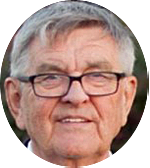
In April of 1962, I was sent to 435 Squadron, Edmonton, on temporary duty for a month. We were to fly into the Arctic and set up a base camp at Mould Bay (early spring -20º to -40ºF). From there, we, in Dakota 587, and another crew in Dakota 200, both on skis, flew missions to various fuel caches around the Arctic. My aircraft commander, hereinafter referred to as The Skipper, was also the mission commander. I have not mentioned any names for reasons that will become obvious.
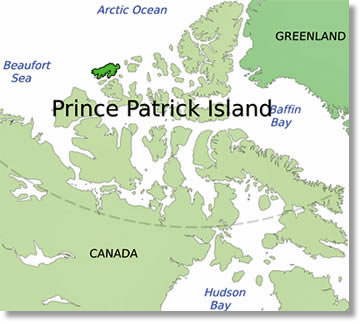
Mould Bay is a joint US/Canadian weather station on Prince Patrick Island with a normal complement of six. We upped it to about 60 during our stay. Talk about culture shock! “Operation Roving Deposit” as it was called, was organized to prepare avgas fuel caches for use by the Army Engineering Corps who were to come up in the summer and re-survey the Arctic, as during WWII, the maps were found to be very inaccurate, as we will see later. We would roll 45-gallon drums of avgas up two long pipes that formed a loading ramp into the aircraft, secure them and fly off to these caches. The quantity of drums was dictated by the distance to the cache as we always took off with full fuel (808 US gallons?). We also carried a large 400 lb. box of canned goods and rations that was substantially over-and-above those found in the standard survival kit.
Operations Roving Deposit and Tern
By Tony Street
The Skipper: “If we go down, we’ll be the best fed survivors in Arctic history, we’ll gain weight!” As a result, we routinely took off overweight; 31 - 32,000 lbs and the maximum authorized weight in those days was 29,500 lbs if I recall correctlyOn arrival at the cache, we would land on sea ice (an operation in itself), taxi up onto the shore of the island, I would jump out of the aircraft, shovel down to the gravel to ensure that we were, in fact, on the island.
Then, with the Co-Jo at the wheel monitoring the engines (we always left the engines running when away from base), the remainder of the crew would untie the drums and roll them down the pipes onto the beach. There we would set them bungs-up (so the water would freeze in the bottom), strap them together and erect a red flag so as to identify them when they got covered in snow. (In the Arctic, any fuel cache is “public property.” If an aviator needed fuel badly, you would land, refuel, and report it immediately to the appropriate authorities.)
On the 23rd of April we went to Resolute Bay to “Pickup the Standby Aircraft.” We felt that we would rather have it on-hand than have to go and get it in an emergency, and a wise move it proved to be!
Then, with the Co-Jo at the wheel monitoring the engines (we always left the engines running when away from base), the remainder of the crew would untie the drums and roll them down the pipes onto the beach. There we would set them bungs-up (so the water would freeze in the bottom), strap them together and erect a red flag so as to identify them when they got covered in snow. (In the Arctic, any fuel cache is “public property.” If an aviator needed fuel badly, you would land, refuel, and report it immediately to the appropriate authorities.)
On the 23rd of April we went to Resolute Bay to “Pickup the Standby Aircraft.” We felt that we would rather have it on-hand than have to go and get it in an emergency, and a wise move it proved to be!
On the 24th of April, we loaded up our Cfort with six scientists from the Defence Research Board (DRB), from Victoria, BC, plus their gear. We took off weighing 32,000 lbs. and flew straight west for about two hours over the Beaufort Sea until the Navigator said we were “There” (wherever “There” was).
Our mission was to land on the ice, drop these chaps off, and return in two days and pick them up. Easier in the planning....!
On arrival at the site, first, we had to circle and select a likely looking “Lead” (That’s where the ice has formed a pressure ridge, erupted, and the resulting body of open water freezes into a flat, narrow and long “lake.” Then, we had to determine if the ice was thick enough to hold us. This was done in three passes. The first pass was made at full throttle, touching down gently onto the ice and “flying” the length of the lead gradually increasing our weight on the ice and then taking off again. Once again in the air, we flew a circuit and looked at our tracks to see in they were turning black from water coming up through cracks in the ice. There wasn't any such indication so, onto the next phase. We then came in and “thumped’ the bird down and put full weight on the gear (Skis) for a high speed taxi and takeoff. We again checked the tracks for changing colour. Now, the moment of truth! According to ice studies, we needed a minimum of 16” of sea ice to support our weight.
Our mission was to land on the ice, drop these chaps off, and return in two days and pick them up. Easier in the planning....!
On arrival at the site, first, we had to circle and select a likely looking “Lead” (That’s where the ice has formed a pressure ridge, erupted, and the resulting body of open water freezes into a flat, narrow and long “lake.” Then, we had to determine if the ice was thick enough to hold us. This was done in three passes. The first pass was made at full throttle, touching down gently onto the ice and “flying” the length of the lead gradually increasing our weight on the ice and then taking off again. Once again in the air, we flew a circuit and looked at our tracks to see in they were turning black from water coming up through cracks in the ice. There wasn't any such indication so, onto the next phase. We then came in and “thumped’ the bird down and put full weight on the gear (Skis) for a high speed taxi and takeoff. We again checked the tracks for changing colour. Now, the moment of truth! According to ice studies, we needed a minimum of 16” of sea ice to support our weight.
To determine this, we had a 4-foot stick marked in inches with a hook on the bottom to engage the underside of the ice. How do we engage the bottom of the ice you may well ask? Well, we had a gasoline driven auger with a six-inch diamond tipped blade. Prior to landing, we fired up the gas engine and installed the auger. We then landed and taxied to the far end of the lead. With the aircraft still taxiing slowly, The Flight engineer and I jumped from the aircraft, and, while trotting alongside (not an easy job in full arctic gear), were handed the running auger by the boffins.
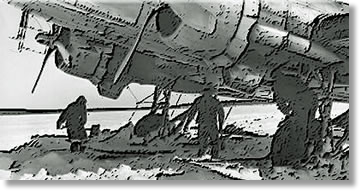
We stuck the tip onto the ice and opened the throttle. The thing went through the ice so quickly it seemed as it was only an inch thick and that we were doomed! We removed the auger and “hooked” the ice… we had 23”… Thank you very much! Note: “The Plan” was that we were to signal the Dakota, which was taxiing about in a “saucer” that moved under it as it as it continued to taxi (tremendous strength and flexibility of sea ice!) if there was not enough ice to support the weight of a stationary aircraft. Upon seeing this signal, our Douglas Racer was to take off, circle and drop us emergency gear and then go back to Mould Bay and figure out how to retrieve us!
As far as we knew at the time, we had set a record of sorts in that we were the heaviest RCAF aircraft to ever land on sea ice. Finding the ice safe, the aircraft was taxied to one end of the lead and, with the engines running, we unloaded it. We helped the scientists erect their tents, start a generator and set up house. We then drilled another hole in the ice and lowered a hydrophone down into the sea on a 1000’ cable. (I have neglected to tell you that this mission was classified. We later found that it was not a scientific “ice” mission, but a cold war operation to test a new submarine detection hydrophone in Canada’s arctic waters.). We returned to Mould Bay.
As far as we knew at the time, we had set a record of sorts in that we were the heaviest RCAF aircraft to ever land on sea ice. Finding the ice safe, the aircraft was taxied to one end of the lead and, with the engines running, we unloaded it. We helped the scientists erect their tents, start a generator and set up house. We then drilled another hole in the ice and lowered a hydrophone down into the sea on a 1000’ cable. (I have neglected to tell you that this mission was classified. We later found that it was not a scientific “ice” mission, but a cold war operation to test a new submarine detection hydrophone in Canada’s arctic waters.). We returned to Mould Bay.
While returning to Mould Bay from Cache 12, we stopped in Winter Harbour, another radar installation as we discovered we would over fly it. The Skipper had asked, "anyone for a good lunch?” We all agreed and we landed. We went to the mess hall and found that, as this was a Distant Early Warning line (DEW) radar site, a civilian contractor ran the mess. As us “drop-ins” were a half an hour late for the regular lunch hours, it would cost us $120.00 each to flash-up the facilities (that were probably still warm). The upside was that for $120.00, we could have pretty much anything we wanted. As we were getting $6.75 per diem allowance, 30 minutes later found us airborne eating frozen box lunches.
About this time, as we had 24 hours of daylight, we were working 16-18 hours a day. The Skipper was laying on missions one after another. The Navigators were particularly stressed as they bore the responsibility of locating the caches by dead reckoning, using the sextant and map reading (and we all know the accuracy of those!). One day, a shouting match broke out between pilots, navigators and The Skipper. They quickly retreated to the radio shack where they could yell at each other in soundproof privacy. The bone of contention was the pace being set by The Skipper. “We will not last the distance at this rate!” was one opinion. We took a day off to rest. There was no log book entry for the 27th April.
24 hours of sitting around in Mould Bay would drive you nuts, we’d rather fly. It was confided in me later that one of the Navigators had observed The Skipper popping "No-Doze" pills. No wonder he was all gung-ho!
Next day we returned to the Polar Pack on a boffin-feeding mission. We flew over and dropped them some gear and fresh rations (so they would have the rations they landed with in case of any trouble. A good move, as we shall see!).
On the 1st of May, it was time to retrieve the Polar Packers. When we left Mould Bay, the weather was as clear as could be. Half way there, conditions changed and “Dreaded Ice Fog” formed. By pre-arrangement, one half-hour before our arrival, they were to turn on their SARAH beacon. Recall them? The Search and Rescue And Homing beacon emitted a cone type signal that widened with altitude. We locked on to it and made several passes in the ice fog, a couple as low as 50’ by our radio altimeter.
About this time, as we had 24 hours of daylight, we were working 16-18 hours a day. The Skipper was laying on missions one after another. The Navigators were particularly stressed as they bore the responsibility of locating the caches by dead reckoning, using the sextant and map reading (and we all know the accuracy of those!). One day, a shouting match broke out between pilots, navigators and The Skipper. They quickly retreated to the radio shack where they could yell at each other in soundproof privacy. The bone of contention was the pace being set by The Skipper. “We will not last the distance at this rate!” was one opinion. We took a day off to rest. There was no log book entry for the 27th April.
24 hours of sitting around in Mould Bay would drive you nuts, we’d rather fly. It was confided in me later that one of the Navigators had observed The Skipper popping "No-Doze" pills. No wonder he was all gung-ho!
Next day we returned to the Polar Pack on a boffin-feeding mission. We flew over and dropped them some gear and fresh rations (so they would have the rations they landed with in case of any trouble. A good move, as we shall see!).
On the 1st of May, it was time to retrieve the Polar Packers. When we left Mould Bay, the weather was as clear as could be. Half way there, conditions changed and “Dreaded Ice Fog” formed. By pre-arrangement, one half-hour before our arrival, they were to turn on their SARAH beacon. Recall them? The Search and Rescue And Homing beacon emitted a cone type signal that widened with altitude. We locked on to it and made several passes in the ice fog, a couple as low as 50’ by our radio altimeter.
We saw nothing as we zapped through the zone of silence that marked their position. They told us later that they could “count the rivets” as we thundered overhead, just above them.
It was the 3rd of May before we could get them out. It proved wise that we had dropped rations earlier. I worked the weight and balance beforehand and determined that we would be within weight limits on takeoff out of there but heavy nonetheless. To be sure we could lift off at our weight on skis, from a short lead, the Skipper ordered a JATO (Jet Assisted Take Off) bottle to be hung under the belly of our beast.
We landed, stowed all the gear and started our takeoff run. Just as we hit rotation speed the bottle was fired. We climbed like a homesick angel; rivets popping, metal bending, with smoke and flame trailing behind us. This accompanied by a roar and an acceleration rate that drove you to the back of the aircraft! It’s something I’m glad I did, but don’t want to do again!
It was the 3rd of May before we could get them out. It proved wise that we had dropped rations earlier. I worked the weight and balance beforehand and determined that we would be within weight limits on takeoff out of there but heavy nonetheless. To be sure we could lift off at our weight on skis, from a short lead, the Skipper ordered a JATO (Jet Assisted Take Off) bottle to be hung under the belly of our beast.
We landed, stowed all the gear and started our takeoff run. Just as we hit rotation speed the bottle was fired. We climbed like a homesick angel; rivets popping, metal bending, with smoke and flame trailing behind us. This accompanied by a roar and an acceleration rate that drove you to the back of the aircraft! It’s something I’m glad I did, but don’t want to do again!
On the 4th of May, as we were returning from Cache 16 to Resolute Bay, we received a “Mayday” call from the Skipper of Dakota 200.
Their skipper had pranged the aircraft while landing on the sea ice beside an island. Instead of landing along the ridges caused by the drifting snow, he elected to land at 90 degrees to them. In doing so, harmonics were set up by the thumping of the aircraft across them, resulting in the collapse of the left hand main gear. This of course, bent the propeller blades, and ground looped the aircraft. Fortunately, no one was injured.
We acknowledged the call, returned to Mould Bay to refuel and took off for the crash site. This is an example of where the maps were found to be incorrect. The crash site was marked with an X on the map at the mouth of a river. Our Navigator took a sextant shot after we arrived and found a five-mile disagreement in the two “fixes.” This was the theme throughout the operation so all our navigation was done using the maps and the Mk 1 eyeball.
From the air, we could easily see why he made the decision he did. The side of the island where the cache was to be built had a pressure ridge up to 40-ft tall running its length about a quarter mile from shore. This ridge caused the winds to ripple the snow in the manner described above. It would have been an impossible task to move the drums over the pressure ridge, so he opted to land inside it, with the results as already described.
We landed on the offshore side of the ridge and, leaving the co-jo in the right hand seat to keep the engines ticking over, took off on foot for the site.
This became one of the most interesting experiences of my life. Once out of sight of the aircraft, one had no visual reference, such as a telephone pole or house, from which to judge distance or height. You looked at a block of ice sticking up from the ridge ahead and assumed it was as big as an automobile; it took forever to reach, and to find it 40’ tall!
The ice was so pure and clear you could read your ID card through a one-foot thickness.
Probably, the most disturbing aspect was the silence! In the 40 degree below zero cold there was an absolute absence of wind and noise. The air was perfectly still, and the resulting absolute silence was quietly terrifying. The loudest noise was the lub-dub of your heart and the roar of your blood coursing through your skull. For the first instant or two, you felt as though you were having an attack of some sort and you felt a kind of vertigo. It’s amazing how much our senses rely on the every day background noises to maintain stability.
When you stood still and exhaled strongly, your breath would immediately form a cloud of crystal-clear ice droplets in front of you. We all agreed later that we could hear them making little tinkling sounds as they collided with each other while falling to the ground.
We walked into the prang site and assisted the crew in taking all the sensitive material we could from the Dakota; morphine in the first aid kit, the survival shotgun and its ammo, a black box that we needed for our machine and other sundry stuff. Although this is the high arctic, there is a lot of bush pilot traffic. These guys are not above overhearing the “Mayday” and after the rescue, landing their Twin Otter (Twatter) and stripping the wreck of all they can carry, especially the instruments.
Their skipper had pranged the aircraft while landing on the sea ice beside an island. Instead of landing along the ridges caused by the drifting snow, he elected to land at 90 degrees to them. In doing so, harmonics were set up by the thumping of the aircraft across them, resulting in the collapse of the left hand main gear. This of course, bent the propeller blades, and ground looped the aircraft. Fortunately, no one was injured.
We acknowledged the call, returned to Mould Bay to refuel and took off for the crash site. This is an example of where the maps were found to be incorrect. The crash site was marked with an X on the map at the mouth of a river. Our Navigator took a sextant shot after we arrived and found a five-mile disagreement in the two “fixes.” This was the theme throughout the operation so all our navigation was done using the maps and the Mk 1 eyeball.
From the air, we could easily see why he made the decision he did. The side of the island where the cache was to be built had a pressure ridge up to 40-ft tall running its length about a quarter mile from shore. This ridge caused the winds to ripple the snow in the manner described above. It would have been an impossible task to move the drums over the pressure ridge, so he opted to land inside it, with the results as already described.
We landed on the offshore side of the ridge and, leaving the co-jo in the right hand seat to keep the engines ticking over, took off on foot for the site.
This became one of the most interesting experiences of my life. Once out of sight of the aircraft, one had no visual reference, such as a telephone pole or house, from which to judge distance or height. You looked at a block of ice sticking up from the ridge ahead and assumed it was as big as an automobile; it took forever to reach, and to find it 40’ tall!
The ice was so pure and clear you could read your ID card through a one-foot thickness.
Probably, the most disturbing aspect was the silence! In the 40 degree below zero cold there was an absolute absence of wind and noise. The air was perfectly still, and the resulting absolute silence was quietly terrifying. The loudest noise was the lub-dub of your heart and the roar of your blood coursing through your skull. For the first instant or two, you felt as though you were having an attack of some sort and you felt a kind of vertigo. It’s amazing how much our senses rely on the every day background noises to maintain stability.
When you stood still and exhaled strongly, your breath would immediately form a cloud of crystal-clear ice droplets in front of you. We all agreed later that we could hear them making little tinkling sounds as they collided with each other while falling to the ground.
We walked into the prang site and assisted the crew in taking all the sensitive material we could from the Dakota; morphine in the first aid kit, the survival shotgun and its ammo, a black box that we needed for our machine and other sundry stuff. Although this is the high arctic, there is a lot of bush pilot traffic. These guys are not above overhearing the “Mayday” and after the rescue, landing their Twin Otter (Twatter) and stripping the wreck of all they can carry, especially the instruments.
We flew back to the site and walked back into the wreck from our parking spot of the day before. This time, The Flight Engineer stayed to baby-sit the engines. At the end of a half-hour trek across the ridge, we arrived at the site. We were surprised to find polar bear tracks with foot prints a good 12” in diameter all around the aircraft where they had eaten the fabric from the elevators, ailerons and rudder. It turns out that they like the taste of the “dope” used to tighten the fabric! We gathered all the information needed, took more gear from the aircraft and returned to Resolute Bay where an irate CO met us. He chastised us for leaving the confines of the base without weapons which was contrary to Station Standing Orders.
We placed all the goodies on a rescue toboggan and trekked back to our own aircraft and we all took off for Resolute Bay. On arrival, we went to the radio shack and called our squadron headquarters in Edmonton to report the situation. They called us back the next morning with a bunch of technical questions; was part X broken or bent? Was part Y bent or OK? etc. etc.. From our answers the engineers would decide Dakota 200’s fate.
“Why,” he cried, “You could come upon polar bears! You know they like to hide in the pressure ridges and stalk their dinner, don’t you?” Sheepishly, we said nothing and headed for the mess and a cool Molson’s and discussed the wisdom of bringing in the standby aircraft when we did.
(One year later, a Mobile Repair Team jacked up the aircraft, welded the gear down and changed the prop. The pilot who pranged it had heard of this rescue mission and asked for permission to fly it out. It was granted. He took off on two engines, feathered number one and flew the damaged Dakota to Resolute Bay. There it was repaired to serviceable standards and returned to normal operations in Edmonton.)
Thus ends my account of “Operation Roving Deposit.”
Here starts “Operation Tern.”
After completing Roving Deposit, we were surprised to be handed “Operation Tern.” The Skipper was told of this during phone call to HQ. He tried to get us out of it, but was unsuccessful.
The first phase of the new operation was to fly all and sundry from Resolute Bay to Thule and take a few days off. We were to then fly the boffins to a scientific installation on Hazen Lake that had been shut down for the winter.
The three-hour trip from Resolute to Thule had its moments. The Radio Officer (RO) was not a happy man. He had been called off his honeymoon to take part in the operation, thus his negative attitude was understandable, but only for the first week.
As this was during the Cold War, when we filed a flight plan for Thule, a USAF BEMEWS radar base in Greenland, we were given the day’s “Authentication Codes” by Base Ops. During the flight, Thule control would radio a challenge calling for authentication by us, using today’s code. After about three or four successful authentications, the RO blew one. The result: Thule scrambled two F106s, who took positions on our wing tips with gear and flaps extended to slow down to our speed, a spectacular120 knots!
(One year later, a Mobile Repair Team jacked up the aircraft, welded the gear down and changed the prop. The pilot who pranged it had heard of this rescue mission and asked for permission to fly it out. It was granted. He took off on two engines, feathered number one and flew the damaged Dakota to Resolute Bay. There it was repaired to serviceable standards and returned to normal operations in Edmonton.)
Thus ends my account of “Operation Roving Deposit.”
Here starts “Operation Tern.”
After completing Roving Deposit, we were surprised to be handed “Operation Tern.” The Skipper was told of this during phone call to HQ. He tried to get us out of it, but was unsuccessful.
The first phase of the new operation was to fly all and sundry from Resolute Bay to Thule and take a few days off. We were to then fly the boffins to a scientific installation on Hazen Lake that had been shut down for the winter.
The three-hour trip from Resolute to Thule had its moments. The Radio Officer (RO) was not a happy man. He had been called off his honeymoon to take part in the operation, thus his negative attitude was understandable, but only for the first week.
As this was during the Cold War, when we filed a flight plan for Thule, a USAF BEMEWS radar base in Greenland, we were given the day’s “Authentication Codes” by Base Ops. During the flight, Thule control would radio a challenge calling for authentication by us, using today’s code. After about three or four successful authentications, the RO blew one. The result: Thule scrambled two F106s, who took positions on our wing tips with gear and flaps extended to slow down to our speed, a spectacular120 knots!
Now, picture two young, testosterone-laden, USAF fighter jocks in the best jet of the era on a remote posting with no female company for a year, their thumbs on the red button that would launch the heat-seeking missiles slung under their wings. These guys had their dark sun-visors down, skulls and crossbones and other threatening devices painted on their helmets, oxygen masks on and were looking at us with cold, eyeless dispatch. To deter them from any untoward action and assure them we were friendly forces, we in the back, were grinning idiotically and waving frantically at them out the windows!
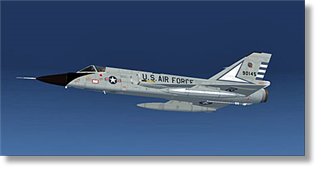
With a muttered “Watch this, a...holes!” The Skipper made his move. He reached over and pulled the throttles back. We immediately slowed to just above stall speed and the fighters tried to match it. Doing so, they started to stall and wobble about in the sky.
Thinking that their adrenaline, aggravation and testosterone levels would be peaking just about now, and that we were a “pickle” away from death, we were screaming, “Skipper, for Christ’s sake, don’t piss them off!” Our fears were unfounded, however. With a friendly wave, they cleaned up their aircraft, kicked in the burners and, on columns of flame and smoke, were off back to Thule.
When we arrived at Thule, we were met by everything but a band. The base CO, a Bird Colonel, joined the throng who came out to see “Anyone crazy enough to fly above the Arctic Circle in a two-engined aircraft!” The smallest aircraft the USAF allowed to operate in these areas was the C54. That night, in the messes, the Crazy Canuks didn’t have to buy a beer.
While in Thule, there was a discussion regarding inspection of the Dakotas. The Flight Engineer on the other Dakota wanted hangar space to put the birds in and carry out “C” checks or whatever. . The Flight engineer on my Dakota told The Skipper “We’ve had these kites up in the cold and outside for almost three weeks, they’re running fine. They flew us in and they’ll fly us out. If it aint broke, don’t fix it!” The other a/c did not agree, and told The Skipper so.
“These guys are the maintainers,” said The Skipper, “let them sort it out the way they want.” With that he was off to the O Club. The rest of my crew and I stayed behind and assisted our Flight Engineer in cleaning the bird, oiling, refueling and a general sprucing up of our home-away-from-home. It had been good to us. We had it towed to a parking area outside in the cold and then we departed for the NCO Club.
The other Flight Engineer had opted for hangar space. He had his Douglas Racer towed in and left overnight. The next morning he and his Loadmaster went to the hangar to carry out his maintenance drill. When they arrived, they found the Dakota sitting in pools of water, oil and hydraulic fluid. The aircraft had thawed completely and was haemorrhaging from almost every seal!
Next morning, we were in the mess hall eating SOS (Don’t ask, but it was only 17 cents for brekky) when the flight engineer located us. “I need your help!” He whined to my flight engineer “What shall I do now?” while explaining the situation.
Thinking that their adrenaline, aggravation and testosterone levels would be peaking just about now, and that we were a “pickle” away from death, we were screaming, “Skipper, for Christ’s sake, don’t piss them off!” Our fears were unfounded, however. With a friendly wave, they cleaned up their aircraft, kicked in the burners and, on columns of flame and smoke, were off back to Thule.
When we arrived at Thule, we were met by everything but a band. The base CO, a Bird Colonel, joined the throng who came out to see “Anyone crazy enough to fly above the Arctic Circle in a two-engined aircraft!” The smallest aircraft the USAF allowed to operate in these areas was the C54. That night, in the messes, the Crazy Canuks didn’t have to buy a beer.
While in Thule, there was a discussion regarding inspection of the Dakotas. The Flight Engineer on the other Dakota wanted hangar space to put the birds in and carry out “C” checks or whatever. . The Flight engineer on my Dakota told The Skipper “We’ve had these kites up in the cold and outside for almost three weeks, they’re running fine. They flew us in and they’ll fly us out. If it aint broke, don’t fix it!” The other a/c did not agree, and told The Skipper so.
“These guys are the maintainers,” said The Skipper, “let them sort it out the way they want.” With that he was off to the O Club. The rest of my crew and I stayed behind and assisted our Flight Engineer in cleaning the bird, oiling, refueling and a general sprucing up of our home-away-from-home. It had been good to us. We had it towed to a parking area outside in the cold and then we departed for the NCO Club.
The other Flight Engineer had opted for hangar space. He had his Douglas Racer towed in and left overnight. The next morning he and his Loadmaster went to the hangar to carry out his maintenance drill. When they arrived, they found the Dakota sitting in pools of water, oil and hydraulic fluid. The aircraft had thawed completely and was haemorrhaging from almost every seal!
Next morning, we were in the mess hall eating SOS (Don’t ask, but it was only 17 cents for brekky) when the flight engineer located us. “I need your help!” He whined to my flight engineer “What shall I do now?” while explaining the situation.
We all trooped up to the hangar to find a very irate USAF Hangar Chief. He was beside himself at the mess that was created by the thawing Dakota. It had been so long since their last removal that when they were released, they sprung into a form of their own choosing. With a lot of effort and cursing, we got them back on.
While we were doing this, The Flight Engineer was negotiating with the Yanks. They agreed to tow the bird outside and park it beside ours. The plan was to let it re-freeze and then return and service it outside. The other Flight Engineer was to remain by himself and clean up his mess to the satisfaction of us and the gnarly sergeant.
Again, the plan worked. Once the bird froze again, we topped up all the fluid levels and all was well. I understand that the gnarly sergeant had one or two of his troops help with the cleanup, but he wouldn’t admit it later, over a beer.
On the 10th of May we flew from Thule to Hazen Lake. Upon arrival at Hazen, we were to land on the ice in the same manner as before, and help the DRB weenies open camp. This time we were able to shut down the engines as we had “borrowed” a small Herman-Nelson type machine from the Americans at Thule with which to warm the engines.
We landed and taxied up to the base with no problem. We unloaded the guys and their gear and then we all shoveled out the base. Although it was –30 F, we could work in shirtsleeves, as there was absolutely no wind. The secret was not to break a sweat, if you did, it would freeze immediately and send you racing for your parka. We dug out the blue flags first (water), black flags second (shelter (tents)), red flags third (fuel), green flags next (rations) and last, the yellow (snowmobiles).
That night, the crew slept in arctic sleeping bags in nylon “Quonset Hut,” type tent heated by an oil stove. We slept naked so as to hang out our arctic flying suits to dry and air out.
While we were doing this, The Flight Engineer was negotiating with the Yanks. They agreed to tow the bird outside and park it beside ours. The plan was to let it re-freeze and then return and service it outside. The other Flight Engineer was to remain by himself and clean up his mess to the satisfaction of us and the gnarly sergeant.
Again, the plan worked. Once the bird froze again, we topped up all the fluid levels and all was well. I understand that the gnarly sergeant had one or two of his troops help with the cleanup, but he wouldn’t admit it later, over a beer.
On the 10th of May we flew from Thule to Hazen Lake. Upon arrival at Hazen, we were to land on the ice in the same manner as before, and help the DRB weenies open camp. This time we were able to shut down the engines as we had “borrowed” a small Herman-Nelson type machine from the Americans at Thule with which to warm the engines.
We landed and taxied up to the base with no problem. We unloaded the guys and their gear and then we all shoveled out the base. Although it was –30 F, we could work in shirtsleeves, as there was absolutely no wind. The secret was not to break a sweat, if you did, it would freeze immediately and send you racing for your parka. We dug out the blue flags first (water), black flags second (shelter (tents)), red flags third (fuel), green flags next (rations) and last, the yellow (snowmobiles).
That night, the crew slept in arctic sleeping bags in nylon “Quonset Hut,” type tent heated by an oil stove. We slept naked so as to hang out our arctic flying suits to dry and air out.
During the night the stove went out and when I awoke, I could hear the others stirring, sniffling, coughing and farting in their bags. No one wanted to be the first awake as he would have to climb out of his bag stark naked and don a frozen, nylon flying suit and light the stove.
As I was the lowest rank on the crew, I was prepared for what came next. “Airman Street!” roared The Skipper good naturedley, loud enough to awaken me even if I had been asleep, “Get out of your #@$% ing fart-sack and light the #@%& ing stove and put on some $#& ing coffee!”
“Yessir!” was all I said (but not all I thought!).
As I was the lowest rank on the crew, I was prepared for what came next. “Airman Street!” roared The Skipper good naturedley, loud enough to awaken me even if I had been asleep, “Get out of your #@$% ing fart-sack and light the #@%& ing stove and put on some $#& ing coffee!”
“Yessir!” was all I said (but not all I thought!).
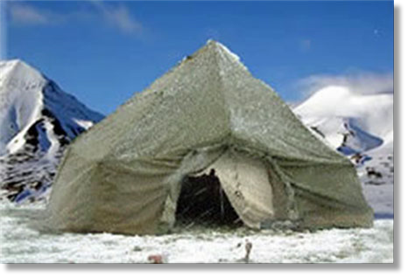
After a breakfast of corn flakes, bacon and eggs (powdered) and toast, all of which had wintered there in Father Nature’s Freezer, it was time to find a latrine. Asking the question, I was handed a roll of paper and directed outside and to the rear of the camp. Once outside, I turned in the direction indicated, to see about 100 yards away, on top of a 30-foot hill, the bottom half of 50-gallon fuel drums with a 16-inch wide plank across it with a 12-inch diameter hole therein. All this in the complete open air! Knowing that I had no alternative, I pulled down my one-piece flying suit, downed shorts and assumed the position. Sitting on top of the world, in frozen, but spectacular surroundings, with mountains and glaciers abounding, overlooking the peons down in the camp, I was one with nature and master of all I surveyed!
However, my reverie was short-lived. While in this contemplative mood, I was startled by a shout as one of the DRB twits ran from the mess tent waving a stopwatch. All of a sudden, my world went dim, and stayed so, as the sun took 1.5 minutes to disappear behind the mountain to my rear and emerge on the other side.
Officially: Night was 1.5 minutes long! In those latitudes at that time of year, the sun makes small circles in the sky above you.
The Skipper called a crew briefing. He and the chief scientist had been talking. When the camp was shut down at the end of last year, there was an instrument worth $100,000.00 left on top of the glacier near the camp. Over the winter, it transmitted signals to them, via a satellite, reporting on the movement of the glacier and other esoteric stuff. Originally it had been positioned by helicopter. For us to recover it by landing on the glacier would assist him greatly in his continual budget bind. The Skipper asked us to participate, on a volunteer basis, as no one had landed a C47 on a living glacier before. We all agreed, except the Radio Officer, who would remain behind and be made to wash dishes in the mess tent. Off we went. Finding the glacier proved to be no problem, it was the biggest thing in our world, about 200 feet high and two miles across. We flew over it and quickly located the marker flag about half a mile from the front edge of the glacier.
“Now, here’s my plan” said The Skipper. “I will land my airchine going up the glacier,” (which sloped upwards in front of us at approximately five degrees), “I will then taxi up the ice and stop alongside the device and hold my ship in position using my props. On my signal, Tony and the flight engineer will leap out and recover the instrument then leap back onboard. I will then trundle up the glacier until we have sufficient takeoff distance behind us then turn and trundle at full throttle until we slip some surly bonds and nip smartly skyward off the end of the glacier” (Skip was given to the flamboyant). Damned if it didn’t work as planned. Although, I think we should have trundled further up the glacier, because as we trundled off the end of it, trying to slip some surly bonds, we dropped like a brick for about 100 feet! Twenty more knots would have helped.
We arrived back at Hazen Lake to find lunch ready, the cook having been ably assisted by the newly domesticated Radio Officer.
After lunch, the Skipper called another briefing. It was time to set sail for Edmonton. However, we needed fuel. To get it, we must fly north to Alert about 45 minutes away. Again, slipping bonds, off we went. Upon arrival at Alert we refueled. This took two hours of hard labour with a wobble pump and many 50-gallon drums of avgas, with each crew member taking his turn wobbling the pump.
However, my reverie was short-lived. While in this contemplative mood, I was startled by a shout as one of the DRB twits ran from the mess tent waving a stopwatch. All of a sudden, my world went dim, and stayed so, as the sun took 1.5 minutes to disappear behind the mountain to my rear and emerge on the other side.
Officially: Night was 1.5 minutes long! In those latitudes at that time of year, the sun makes small circles in the sky above you.
The Skipper called a crew briefing. He and the chief scientist had been talking. When the camp was shut down at the end of last year, there was an instrument worth $100,000.00 left on top of the glacier near the camp. Over the winter, it transmitted signals to them, via a satellite, reporting on the movement of the glacier and other esoteric stuff. Originally it had been positioned by helicopter. For us to recover it by landing on the glacier would assist him greatly in his continual budget bind. The Skipper asked us to participate, on a volunteer basis, as no one had landed a C47 on a living glacier before. We all agreed, except the Radio Officer, who would remain behind and be made to wash dishes in the mess tent. Off we went. Finding the glacier proved to be no problem, it was the biggest thing in our world, about 200 feet high and two miles across. We flew over it and quickly located the marker flag about half a mile from the front edge of the glacier.
“Now, here’s my plan” said The Skipper. “I will land my airchine going up the glacier,” (which sloped upwards in front of us at approximately five degrees), “I will then taxi up the ice and stop alongside the device and hold my ship in position using my props. On my signal, Tony and the flight engineer will leap out and recover the instrument then leap back onboard. I will then trundle up the glacier until we have sufficient takeoff distance behind us then turn and trundle at full throttle until we slip some surly bonds and nip smartly skyward off the end of the glacier” (Skip was given to the flamboyant). Damned if it didn’t work as planned. Although, I think we should have trundled further up the glacier, because as we trundled off the end of it, trying to slip some surly bonds, we dropped like a brick for about 100 feet! Twenty more knots would have helped.
We arrived back at Hazen Lake to find lunch ready, the cook having been ably assisted by the newly domesticated Radio Officer.
After lunch, the Skipper called another briefing. It was time to set sail for Edmonton. However, we needed fuel. To get it, we must fly north to Alert about 45 minutes away. Again, slipping bonds, off we went. Upon arrival at Alert we refueled. This took two hours of hard labour with a wobble pump and many 50-gallon drums of avgas, with each crew member taking his turn wobbling the pump.
Shortly after takeoff from Alert to Resolute Bay, where we would remain overnight, we received a radio message that ordered us to proceed to a lat/long position to check out a report that an ice island had formed and was drifting about. In those days, such an island was a valuable asset. The “Watchers” could establish a “scientific” facility thereon and drift through USSR territory under the protection of some international treaty or other.
Alert was run by the Royal Canadian Navy and was simply a listening post that recorded all transmissions from the USSR. Check its ideal location on a polar projection map, it’s the closest land to the N Pole. We flew for two hours and found the ice island firmly affixed to the pack ice where it had been all its life. Someone had messed up. However, after this diversion, we now had insufficient fuel to reach Resolute Bay so we headed back to Alert for more gas.As we turned around and headed back, we contacted them and were told that ice fog had rolled in from the sea and the airport was shut due to zero visibility. Our only alternative was to drop back in on our friends at Hazen Lake and wait out the weather.
Alert was run by the Royal Canadian Navy and was simply a listening post that recorded all transmissions from the USSR. Check its ideal location on a polar projection map, it’s the closest land to the N Pole. We flew for two hours and found the ice island firmly affixed to the pack ice where it had been all its life. Someone had messed up. However, after this diversion, we now had insufficient fuel to reach Resolute Bay so we headed back to Alert for more gas.As we turned around and headed back, we contacted them and were told that ice fog had rolled in from the sea and the airport was shut due to zero visibility. Our only alternative was to drop back in on our friends at Hazen Lake and wait out the weather.
From this point, things got interesting. The Skipper called a briefing. He and the co-jo had been on the radio with Alert to check on the weather. The ice fog was playing its games and rolling in and out at intervals.
To provide you a mental picture, I’ll describe Alert’s geography as best I can. The base is located on a spit of land just above sea level. Taking off from one end of the runway takes you out over the vast openness of the Arctic Ocean, whereas using the reciprocal; you fly towards a 100-foot bluff. Normal approaches are made over the elevated terrain, descending to the runway and landing towards the ocean. Takeoffs are made in the same direction. Wind is normally not a factor, as there is none. If there is, it is so strong that the whole thing becomes moot and all stay home and drink tea.
To assist their aviating friends, who routinely drop in with rations and mail to this dismal 50-man post, the troops have erected empty, red-painted 50-gallon fuel drums in three rows to mark the runway. The most important and longer row marks the centerline. It runs from the end of the runway, up the side of the steep bluff to the elevated ground and then on for approximately a quarter of a mile. The other two rows mark the right hand and left hand sides of the runway. They, too, start at the end of the runway and extend up the bluff and stop just over the top onto the elevated terrain.
Now, the ice fog. When the fog rolls in, it does so from the north. (It doesn’t have far to come, as it’s only a couple of hundred miles from the North Pole). It is usually deep enough so when it rolls in and bumps against the bluff, its top is at the same level as the elevated ground. When you fly above it, you see white, snow covered ground, giving way to white solid fog. Under certain light conditions you cannot see where one ends and the other begins. However, in this case, we could see the rows of barrels disappearing into the fog. Are you starting to get a picture?
Now, back to the briefing. Skip had determined the timing of the ice fog. It appeared to be rolling in and out at 20-minute intervals, so, if we took off at such and such a time, we would arrive at Alert just as the fog had retreated. We would land, refuel and takeoff for Resolute Bay during the next cycle.
To provide you a mental picture, I’ll describe Alert’s geography as best I can. The base is located on a spit of land just above sea level. Taking off from one end of the runway takes you out over the vast openness of the Arctic Ocean, whereas using the reciprocal; you fly towards a 100-foot bluff. Normal approaches are made over the elevated terrain, descending to the runway and landing towards the ocean. Takeoffs are made in the same direction. Wind is normally not a factor, as there is none. If there is, it is so strong that the whole thing becomes moot and all stay home and drink tea.
To assist their aviating friends, who routinely drop in with rations and mail to this dismal 50-man post, the troops have erected empty, red-painted 50-gallon fuel drums in three rows to mark the runway. The most important and longer row marks the centerline. It runs from the end of the runway, up the side of the steep bluff to the elevated ground and then on for approximately a quarter of a mile. The other two rows mark the right hand and left hand sides of the runway. They, too, start at the end of the runway and extend up the bluff and stop just over the top onto the elevated terrain.
Now, the ice fog. When the fog rolls in, it does so from the north. (It doesn’t have far to come, as it’s only a couple of hundred miles from the North Pole). It is usually deep enough so when it rolls in and bumps against the bluff, its top is at the same level as the elevated ground. When you fly above it, you see white, snow covered ground, giving way to white solid fog. Under certain light conditions you cannot see where one ends and the other begins. However, in this case, we could see the rows of barrels disappearing into the fog. Are you starting to get a picture?
Now, back to the briefing. Skip had determined the timing of the ice fog. It appeared to be rolling in and out at 20-minute intervals, so, if we took off at such and such a time, we would arrive at Alert just as the fog had retreated. We would land, refuel and takeoff for Resolute Bay during the next cycle.
Now, the crunch. Once we had taken off, we would be committed to land at Alert, as we had insufficient fuel to do anything else other than to return to Hazen. If we had to return to Hazen, we would not have enough fuel remaining to attempt another stab at Alert. We would be grounded there until fuel could be flown in, or airdropped to us. This would cause The Skipper much career embarrassment and major heartburn for the rest of us.
“OK, lads,” said The Skipper, “who wants to go? I’m asking for volunteers. Those who choose to remain will have to sit here until the next aircraft comes through. Nothing will appear on your records regarding your physical and mental cravenness.”
“When is the next aircraft?” Asked our Radio Officer.
“In September.” said the Skipper.
“I’ll go.” said the Radio Officer.
“Thought you would.” said The Skipper.
We went.
Although it was only a 45-minute flight, it was probably the most interesting in my flying career. Halfway there the weather went clampers! If you have been thinking ahead of the narrative, you’re probably correct. The fog rolled in on a new schedule of its own and Alert was now zero/zero.
“Well,” said The Skipper “it looks as though we may have a problem, but here’s my plan. It seems that we can’t land under these conditions so we now have two options. We circle about until we have only enough fuel to land and hope the fog rolls out so we can land. Or, we can go back to Hazen Lake and call home for fuel. I’m calling for volunteers to do the first, as we’ll all look like a…holes if we do the second and, as your magnificent leader, I wish to save you such embarrassment and subsequent career implications!”
“Let me think.” said the Radio Officer
“We all go for option one.” said the Co-Jo on behalf of the rest of us.
“I’m still thinking,” said the Radio Officer.
“Not any more, you ain’t,” said the Flight Engineer, “We’re outta fuel!”
With that The Skipper said, “Here we go!” and banked the Dakota around to line up with the centerline of drums. “I want Tony looking out of the left hand window and the Flight Engineer out the right side. If you lose sight of the drums call, “Negative Right” or “Negative Left” as the case may be. This will allow me to take corrective action.” By this time we were just over the end of the elevated ground. The Skipper started his descent into the clag and started counting. “One, one thousand…two, two thousand…three…” I don’t know how long he counted as I was preoccupied creating drums.
“OK, lads,” said The Skipper, “who wants to go? I’m asking for volunteers. Those who choose to remain will have to sit here until the next aircraft comes through. Nothing will appear on your records regarding your physical and mental cravenness.”
“When is the next aircraft?” Asked our Radio Officer.
“In September.” said the Skipper.
“I’ll go.” said the Radio Officer.
“Thought you would.” said The Skipper.
We went.
Although it was only a 45-minute flight, it was probably the most interesting in my flying career. Halfway there the weather went clampers! If you have been thinking ahead of the narrative, you’re probably correct. The fog rolled in on a new schedule of its own and Alert was now zero/zero.
“Well,” said The Skipper “it looks as though we may have a problem, but here’s my plan. It seems that we can’t land under these conditions so we now have two options. We circle about until we have only enough fuel to land and hope the fog rolls out so we can land. Or, we can go back to Hazen Lake and call home for fuel. I’m calling for volunteers to do the first, as we’ll all look like a…holes if we do the second and, as your magnificent leader, I wish to save you such embarrassment and subsequent career implications!”
“Let me think.” said the Radio Officer
“We all go for option one.” said the Co-Jo on behalf of the rest of us.
“I’m still thinking,” said the Radio Officer.
“Not any more, you ain’t,” said the Flight Engineer, “We’re outta fuel!”
With that The Skipper said, “Here we go!” and banked the Dakota around to line up with the centerline of drums. “I want Tony looking out of the left hand window and the Flight Engineer out the right side. If you lose sight of the drums call, “Negative Right” or “Negative Left” as the case may be. This will allow me to take corrective action.” By this time we were just over the end of the elevated ground. The Skipper started his descent into the clag and started counting. “One, one thousand…two, two thousand…three…” I don’t know how long he counted as I was preoccupied creating drums.
Abruptly, our world went quiet as the throttles were pulled all the way back and we impacted the runway with a routine thump. Using the props, Skip brought the Dakota to a stop on the runway, shut down the engines, leaned back in the seat and exclaimed, “There you are, boys, a zero/zero landing done VFR! Where’s the fuel?” At which point, out of the white fog, appeared a bulldozer towing a stoneboat loaded with enough fuel to return us to Resolute Bay which we did forthwith.
Note: At the time, The Skipper was probably the RCAF’s most experienced Dakota driver. He had turned down postings to C119s and C130s to stay flying the venerable C47, and planned on retiring doing so. His wish was soon to be granted.
His last (in)famous mission was carried out after arguing with an Air Defence Command puke about the effectiveness of the DEW line and Pine Tree Line radar defence system. He won the bet by flying a C47 at ground level from Churchill, Manitoba to Winnipeg without being detected. It was only when he raised the tower and asked for landing clearances, did they know he was in the air. What shot him down, was not the act itself, it was his crowing in the O’ club about it that did him in. The political situation was such at the time that criticism of the DEW/Pine tree lines by members of the military was not tolerated.
One more item to round off the tale. To get home we were flying from Resolute Bay to Issacson – Eureka - Mould Bay - Resolute Bay - Edmonton.
We had arrived at Resolute Bay, by coincidence, at the same time that “Operation Boxtop West” was winding up. During this operation the Hercs carried supplies from Resolute Bay to the joint US/Canadian weather stations listed above. To effect this airlift, the first C130 took in ground handling equipment and support gear. About 10 days later, the clean-up ship pulled it out.
Note: At the time, The Skipper was probably the RCAF’s most experienced Dakota driver. He had turned down postings to C119s and C130s to stay flying the venerable C47, and planned on retiring doing so. His wish was soon to be granted.
His last (in)famous mission was carried out after arguing with an Air Defence Command puke about the effectiveness of the DEW line and Pine Tree Line radar defence system. He won the bet by flying a C47 at ground level from Churchill, Manitoba to Winnipeg without being detected. It was only when he raised the tower and asked for landing clearances, did they know he was in the air. What shot him down, was not the act itself, it was his crowing in the O’ club about it that did him in. The political situation was such at the time that criticism of the DEW/Pine tree lines by members of the military was not tolerated.
One more item to round off the tale. To get home we were flying from Resolute Bay to Issacson – Eureka - Mould Bay - Resolute Bay - Edmonton.
We had arrived at Resolute Bay, by coincidence, at the same time that “Operation Boxtop West” was winding up. During this operation the Hercs carried supplies from Resolute Bay to the joint US/Canadian weather stations listed above. To effect this airlift, the first C130 took in ground handling equipment and support gear. About 10 days later, the clean-up ship pulled it out.
We were ready to go home after our Arctic tour on Roving Deposit, so I approached the C130’s Skipper requesting a ride home for most of the C47 people. By going on the C130, we would get home a lot sooner and in relatively more comfort than on the Douglas Racer. We were to leave the pilots and flight engineers to fly the Dakotas back to Edmonton.
As we had the extra help, the plan was to leave Resolute Bay, hit all the bases picking up gear and people, then stop back at Resolute Bay for fuel, and head directly to Edmonton.
Otherwise, as the C130 boys had been flying heavily, they would have to remain overnight back at Resolute Bay, thus adding another day to the tour. All went as planned. After takeoff from Resolute Bay to Edmonton, the last leg of my adventure, our Herc’s cargo compartment was a jumble of yellow ground equipment and a mish-mash of bodies belonging to slip crews, servicing people and a few odds-and-sods hitching a ride south.
All were exhausted from the strenuous work associated with Arctic operations. (Everything takes twice as much energy in the cold while working in heavy clothing).
As we had the extra help, the plan was to leave Resolute Bay, hit all the bases picking up gear and people, then stop back at Resolute Bay for fuel, and head directly to Edmonton.
Otherwise, as the C130 boys had been flying heavily, they would have to remain overnight back at Resolute Bay, thus adding another day to the tour. All went as planned. After takeoff from Resolute Bay to Edmonton, the last leg of my adventure, our Herc’s cargo compartment was a jumble of yellow ground equipment and a mish-mash of bodies belonging to slip crews, servicing people and a few odds-and-sods hitching a ride south.
All were exhausted from the strenuous work associated with Arctic operations. (Everything takes twice as much energy in the cold while working in heavy clothing).
I had volunteered to take the C130 crew’s Loadmaster position, as he was not feeling well. A couple of hours out of Resolute Bay, as I sat in the rear of the aircraft all warm and fuzzy, I nodded off (fell soundly asleep if the truth be known).
I don’t know what awakened me, but it did so with a start, sensing something wrong. I scanned the sleeping passengers, got up, checked both wings and engines for any signs of problems and made my way to the flight deck for a cup of coffee, gingerly climbing over sleeping bodies.
I crawled up into the flight deck to discover the entire front-end crew asleep, dead to the world! In the warm rays of the arctic sun streaming in the windows everyone had succumbed.
Both pilots were slumped forward in their seat belts with the Skipper in the left seat holding an open copy of “Dr. Hudson’s Secret Journal,” in his lap (I don’t know why I remember the title so clearly). The Flight Engineer had his head tilted back on his headrest; mouth open, snoring and catching flies. The Navigator had his head down, resting on his folded arms. The sick Loadie was zizzing in the upper bunk while the second Flight Engineer snored on the lower.
I scanned the instruments. The altimeter was holding steady, as was the artificial horizon so we were not in any immediate danger. My next thought was how to handle the situation without alarming and embarrassing anyone.
Knowing what the Skipper took in his coffee (“NATO Standard”.... coffee, cream ‘n sugar), I eased silently into the galley and made a cup. I then went forward and put it in his cup holder and gently touched him on the shoulder and whispered “Here’s your coffee, Sir.” and stepped back behind the galley. I saw him quickly awaken, assess the situation and reach over and tap the Co-Jo awake. Nothing was said, all was as it should be.
If my estimations were correct, given our course and fuel load, if no one had awakened, we would have made it to the vicinity of Salt Lake City, Utah, before our fuel ran out and we de-skied.
I don’t know what awakened me, but it did so with a start, sensing something wrong. I scanned the sleeping passengers, got up, checked both wings and engines for any signs of problems and made my way to the flight deck for a cup of coffee, gingerly climbing over sleeping bodies.
I crawled up into the flight deck to discover the entire front-end crew asleep, dead to the world! In the warm rays of the arctic sun streaming in the windows everyone had succumbed.
Both pilots were slumped forward in their seat belts with the Skipper in the left seat holding an open copy of “Dr. Hudson’s Secret Journal,” in his lap (I don’t know why I remember the title so clearly). The Flight Engineer had his head tilted back on his headrest; mouth open, snoring and catching flies. The Navigator had his head down, resting on his folded arms. The sick Loadie was zizzing in the upper bunk while the second Flight Engineer snored on the lower.
I scanned the instruments. The altimeter was holding steady, as was the artificial horizon so we were not in any immediate danger. My next thought was how to handle the situation without alarming and embarrassing anyone.
Knowing what the Skipper took in his coffee (“NATO Standard”.... coffee, cream ‘n sugar), I eased silently into the galley and made a cup. I then went forward and put it in his cup holder and gently touched him on the shoulder and whispered “Here’s your coffee, Sir.” and stepped back behind the galley. I saw him quickly awaken, assess the situation and reach over and tap the Co-Jo awake. Nothing was said, all was as it should be.
If my estimations were correct, given our course and fuel load, if no one had awakened, we would have made it to the vicinity of Salt Lake City, Utah, before our fuel ran out and we de-skied.
A Brief Look at Tony Street - Born in Guildford, Surrey, UK in 1937, Tony emigrated to Winnipeg, Manitoba, at age 9, subsequently joining the RCAF in September 1954. His first duties were as a Supply Tech, which he didn't enjoy and was very happy to be able to re-muster to Air Movements in 1961. Following a colourful career, Tony retired from the Air Force in June 1977 and started a second career in private industry, involved in airdrop training and equipment sales to countries world-wide.
For a detailed look at Tony's career check out his bio here
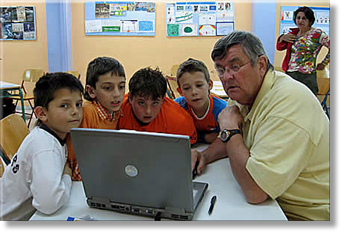
Tony teaching an ESL course in Crete

Freedom of the City of Gibraltar conferred upon Royal Air Force
The Freedom of the City of Gibraltar was conferred upon the Royal Air Force on Saturday in a ceremony at John Mackintosh Square. Although unanimously approved in Parliament in 2018, it hasn’t been possible to hold the event till now.
Gibraltar has a long tradition of military parades, but this one seemed to take on extra significance - because of what was being celebrated, and because the Covid pandemic has made us appreciate things we once may have taken for granted. Among the hundreds present, family members of those taking part in the Parade, together with the Chief Minister, the Governor and the Commander British Forces.
Air Vice Marshall Richard Maddison travelled to Gibraltar specifically to receive the honour on behalf of the RAF. The conferment was carried out by the Mayor. Christian Santos told GBC the event combined civic elements with military ones, while following public health advice.
The conferment of the Freedom of the City was followed by a speech from the Chief Minister at City Hall. Fabian Picardo said the RAF has been fundamental throughout the decades, and was again this year in delivering vaccines. He presented Air Vice Marshall Maddison with the Gibraltar Medallion of Honour, a certificate and a memento to mark the occasion.
Gibraltar has a long tradition of military parades, but this one seemed to take on extra significance - because of what was being celebrated, and because the Covid pandemic has made us appreciate things we once may have taken for granted. Among the hundreds present, family members of those taking part in the Parade, together with the Chief Minister, the Governor and the Commander British Forces.
Air Vice Marshall Richard Maddison travelled to Gibraltar specifically to receive the honour on behalf of the RAF. The conferment was carried out by the Mayor. Christian Santos told GBC the event combined civic elements with military ones, while following public health advice.
The conferment of the Freedom of the City was followed by a speech from the Chief Minister at City Hall. Fabian Picardo said the RAF has been fundamental throughout the decades, and was again this year in delivering vaccines. He presented Air Vice Marshall Maddison with the Gibraltar Medallion of Honour, a certificate and a memento to mark the occasion.
GBC

Princess Royal attends re-formation of 30 Squadron
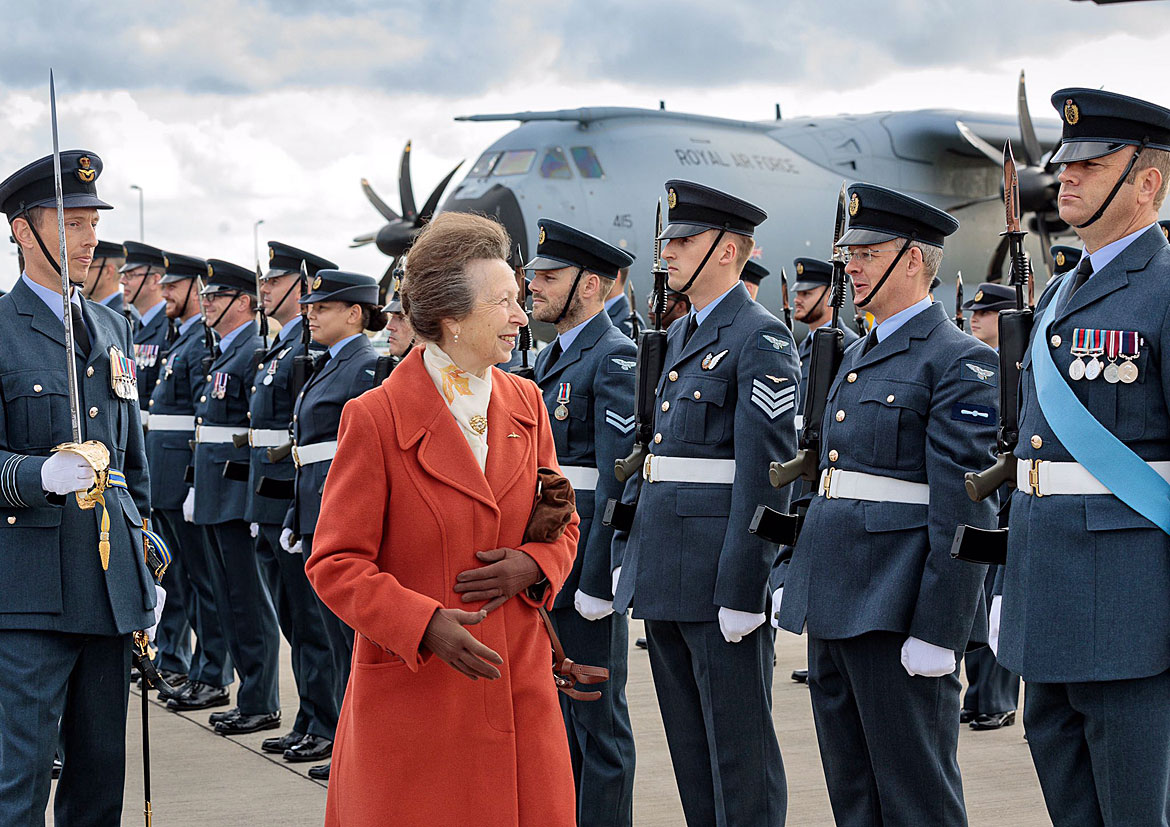
The Princess Royal visited RAF Brize Norton at noon on 28th September to mark the official re-formation of No 30 Squadron, which did not officially stand down but has been operating an administrative function with a single officer since 2017.
The base marked the event with a parade for the Princess, who is honorary air commodore at RAF Brize Norton, in front of a seated crowd of supporting family and friends.
Joining her on the podium in front of military personnel was fellow guest of honour Air Vice-Marshal Alan Gillespie, Air Officer Commanding No 2 Group. They returned the salute as the marchers passed.
No 30 Squadron paraded to the sound of the National Anthem and other music performed by The Band of the Regiment.
The squadron is the newest operator of the A400M Atlas which staged a spectacular flypast above the parade square to mark the momentous occasion.
The officer commanding No 30 Squadron Wing Commander Stu Patton said, "It is an incredible honour to be taking command of the squadron which has more than 100 years of operational experience.
"It has a rich history and I am really excited to be bringing that back to life. We are all looking forward to starting the next chapter with the A400M Atlas.”
oxfordmail.co.uk
The base marked the event with a parade for the Princess, who is honorary air commodore at RAF Brize Norton, in front of a seated crowd of supporting family and friends.
Joining her on the podium in front of military personnel was fellow guest of honour Air Vice-Marshal Alan Gillespie, Air Officer Commanding No 2 Group. They returned the salute as the marchers passed.
No 30 Squadron paraded to the sound of the National Anthem and other music performed by The Band of the Regiment.
The squadron is the newest operator of the A400M Atlas which staged a spectacular flypast above the parade square to mark the momentous occasion.
The officer commanding No 30 Squadron Wing Commander Stu Patton said, "It is an incredible honour to be taking command of the squadron which has more than 100 years of operational experience.
"It has a rich history and I am really excited to be bringing that back to life. We are all looking forward to starting the next chapter with the A400M Atlas.”
oxfordmail.co.uk
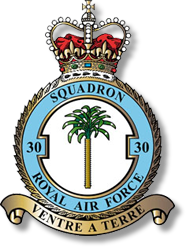
The Duchess of Cambridge returned to royal duties with a visit to RAF Brize Norton to thank the military personnel and volunteers involved with Operation Pitting, a large-scale humanitarian effort to help evacuate Afghanistan last month.
Operation Pitting, the largest humanitarian aid operation in over 70 years, saw 850 evacuees from Afghanistan transported by the Royal Air Force to RAF Brize Norton over a two-week period. In total, the British military forces helped evacuate 15,000 people.
Kate offered her thanks to some of those involved in the operation on behalf of The Queen. During the visit, she also toured a C17 Globemaster transporter plane, which was involved in the operation.
Wing Commander Calvin Bailey, who oversaw Operation Pitting, spoke with reporters after Kate’s visit and revealed that she’d held “very personal” conversations with some of the military personnel gathered and was “so engaging.” Wing Commander Bailey said that the Duchess was interested in hearing about “the experience down the back of the plane, trying to picture what 460 people was like down there, what state they were in. How did they feel, talking about children, which seemed to connect to her. Being able to tap into the right thing is an art.”
He added: “She wanted to show that she had knowledge and understanding of the planes. We knew some people her husband worked with, and they got in touch. And there was one guy who was part of the course behind her husband. So, you know, there’s an instant connection there, and they want to tell their story. They want to say, this is hard. I did this. This is what I feel proud about. And she gave that to them today.”
Sergeant Mark Curtis, who was in charge of the evacuees, said about meeting Kate: “To meet the Duchess and for her to be so interested in and engaged with our stories was, was brilliant. We’re serving our queen, our country, the Royal Family. And obviously to have that level of the boss coming along and and patting you on your back for the hard work was amazing.”
Royal Central
Operation Pitting, the largest humanitarian aid operation in over 70 years, saw 850 evacuees from Afghanistan transported by the Royal Air Force to RAF Brize Norton over a two-week period. In total, the British military forces helped evacuate 15,000 people.
Kate offered her thanks to some of those involved in the operation on behalf of The Queen. During the visit, she also toured a C17 Globemaster transporter plane, which was involved in the operation.
Wing Commander Calvin Bailey, who oversaw Operation Pitting, spoke with reporters after Kate’s visit and revealed that she’d held “very personal” conversations with some of the military personnel gathered and was “so engaging.” Wing Commander Bailey said that the Duchess was interested in hearing about “the experience down the back of the plane, trying to picture what 460 people was like down there, what state they were in. How did they feel, talking about children, which seemed to connect to her. Being able to tap into the right thing is an art.”
He added: “She wanted to show that she had knowledge and understanding of the planes. We knew some people her husband worked with, and they got in touch. And there was one guy who was part of the course behind her husband. So, you know, there’s an instant connection there, and they want to tell their story. They want to say, this is hard. I did this. This is what I feel proud about. And she gave that to them today.”
Sergeant Mark Curtis, who was in charge of the evacuees, said about meeting Kate: “To meet the Duchess and for her to be so interested in and engaged with our stories was, was brilliant. We’re serving our queen, our country, the Royal Family. And obviously to have that level of the boss coming along and and patting you on your back for the hard work was amazing.”
Royal Central
The Duchess of Cambridge visits RAF Base
at Heart of Huge Humanitarian Operation
at Heart of Huge Humanitarian Operation
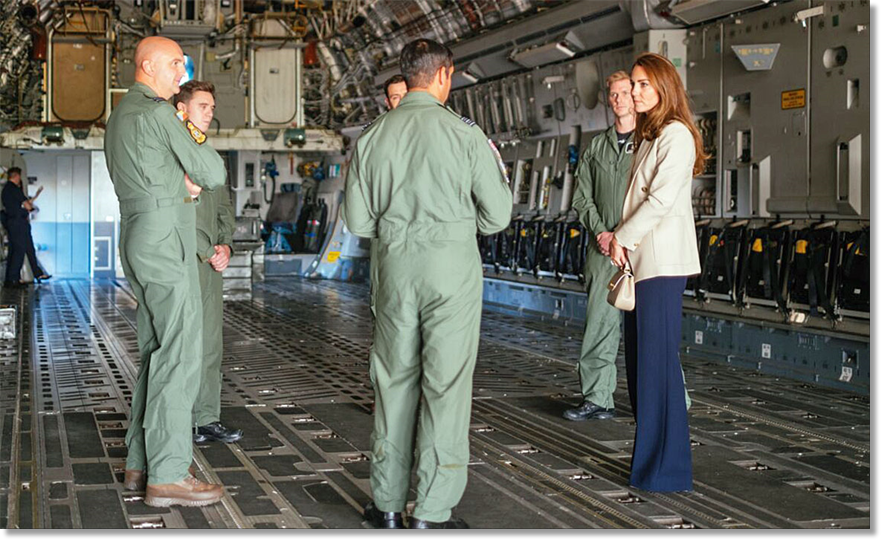
This Newsletter is Dedicated
to the Memory of:
George Howard English (RCAF)
to the Memory of:
George Howard English (RCAF)
Tony Gale
ukmamsoba@gmail.com
If you wish to make a donation,
you may use the above e-mail
through PayPal.
.
ukmamsoba@gmail.com
If you wish to make a donation,
you may use the above e-mail
through PayPal.
.

From: Mal Robinson, Gateshead, Tyne & Wear
Subject: Resettlement Expo in Bristol
Hi Tony,
There is a free resettlement expo being held in Bristol by Pathfinder Magazine in October and whilst it is aimed at service leavers, it is also aimed at veterans and families, with stands there offering advice on military pensions, legal claims and more besides recruiters and training providers.
Subject: Resettlement Expo in Bristol
Hi Tony,
There is a free resettlement expo being held in Bristol by Pathfinder Magazine in October and whilst it is aimed at service leavers, it is also aimed at veterans and families, with stands there offering advice on military pensions, legal claims and more besides recruiters and training providers.
I have included an article link below and the link to Eventbrite to register for free tickets (Click on the images for the links).

Thought it might even be an excuse for some old bods to meet up in the area off the back of it?
Many thanks,
Mal
Many thanks,
Mal









